STRATEGIC REPORT FOR THE FOOTSCRAY HEALTH AND EDUCATION PRECINCT


STRATEGIC REPORT FOR THE FOOTSCRAY HEALTH AND EDUCATION PRECINCT

We acknowledge the Traditional Owners of Country, the Wurundjeri Woi Wurrung and the Boon Wurrung Bunurong Peoples of the Kulin Nation.

We pay our respects to and recognise the contributions of their Elders past and present.
UPD4001 - Design Studio
Compact City | Targeting a more
liveable Footscray Semester 1, 2024
Lecturers:
Katherine Sundermann
Suzanne Barker
Prepared by:
Eliza Kane
Jamie Lam
Deynanti Primalaila
Joyce Siu
Date: 28 May 2024
1
2 INTRODUCTIONCONTEXT VISION

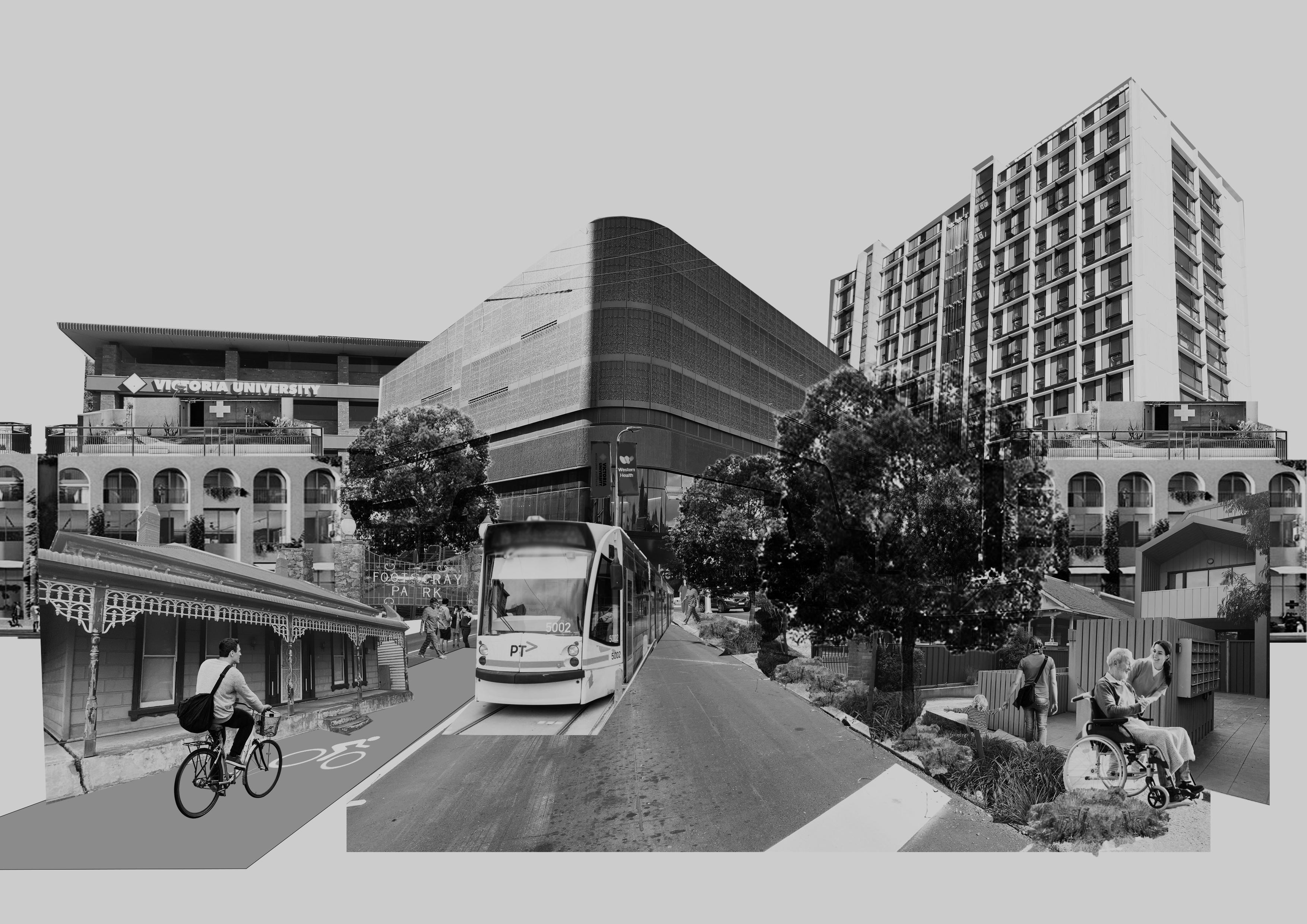
Footscray is a premier health and education precinct connecting people to Melbourne’s West.
Footscray is responsive to the wellbeing of Footscray’s people, through access to high quality green and open spaces, safe active modes of transport, appropriate and affordable housing and a diverse and student-driven community.
This strategic report documents the key strategies, actions and implementation plan for the future of Footscray’s Health and Education precinct - centred in the context of the precinct and Footscray more broadly.
With Footscray’s population forecasted to increase exponentially towards 2050, it is critical to develop and implement strategies now for the future development of this neighbourhood which promote the health and wellbeing of the current and future residents, the protection of the natural environment and preserve and strengthen its cultural and community identity.
This strategic report is one part of the process, providing a roadmap for achieving the WELL / BEINGS vision for Footscray’s Health and Education precinct, focusing on improving accessibility, environment, housing, culture and activation.
There are four key phases relevant to this strategic report and the realisation of the WELL / BEINGS vision. In the initial phases, this involved investigating the context of Footscray and the Health and Education precinct and the key issues and opportunities for the precinct. Building upon this preliminary work, we are currently in Phase 3. This report details the key strategies, proposed actions and implementation plan for the Health and Education precinct - to guide the future development towards creating a more liveable Footscray.
Investigate historical, cultural, policy and governance context of Footscray and the Health and Education precinct.
In conjunction with Maribyrnong City Council, identify key issues and opportunities within the Health and Education precinct.
Develop strategies, actions and implementation plans, guided by the vision for the Health and Education precinct.
Preparing, investigating and implementing the key actions to create a more liveable Footscray.
*Subject to refnement and seeking approvals.
Late 2024 (and beyond)
Early stage investigations guided the development of the WELL / BEINGS vision and the fve core strategies which respond to the context and key issues identifed for the Health and Education precinct.
Through the initial investigations of the Health and Education precinct and consultation with the Maribyrnong City Council, it was identifed that Footscray and the precinct specifcally are experiencing the following issues:
• lack of greenery and accessibility of green spaces
• mobility and public transport accessibility have the potential to be improved
• low density housing, contributing to lack of options for student and key worker housing and unharmonised built form
• questions regarding the location of existing medical practices and precincts
- with the New Footscray Hospital being moved from the current site at Gordon Street
• potential for improved connections between the New Footscray Hospital, Victoria University and the Footscray CBD (at a physical and community level)
Five core strategies were developed to respond to these issues, to create a more liveable Footscray by:
• delivering and facilitating key worker and student housing
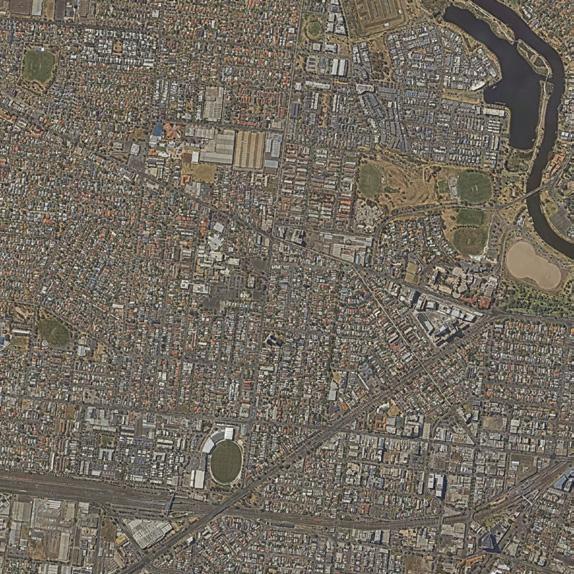
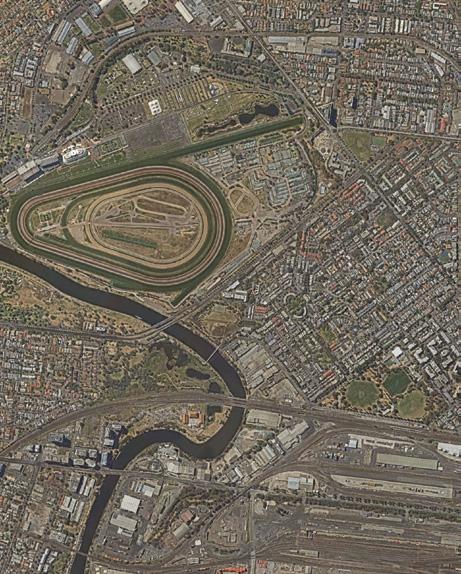
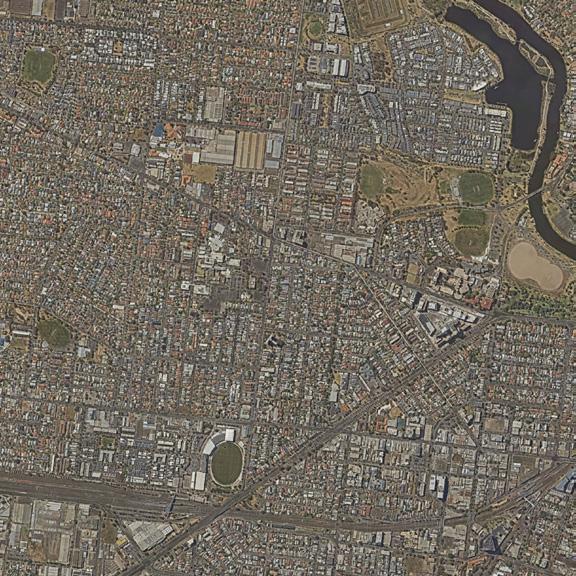

• increasing accessibility to green spaces
• improving connections and active mobility throughout the precinct
• strengthening Footscray’s University Town identity and its role as a core health and education destination - in a way which is sustainable and supports its diverse community and Indigenous culture.
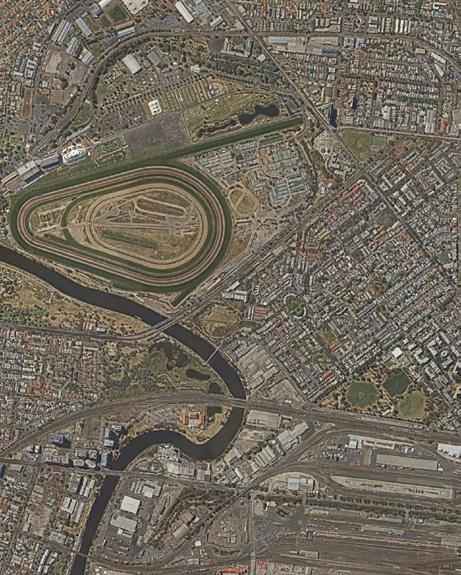

RESPECTING AND REINVIGORATING CULTURE
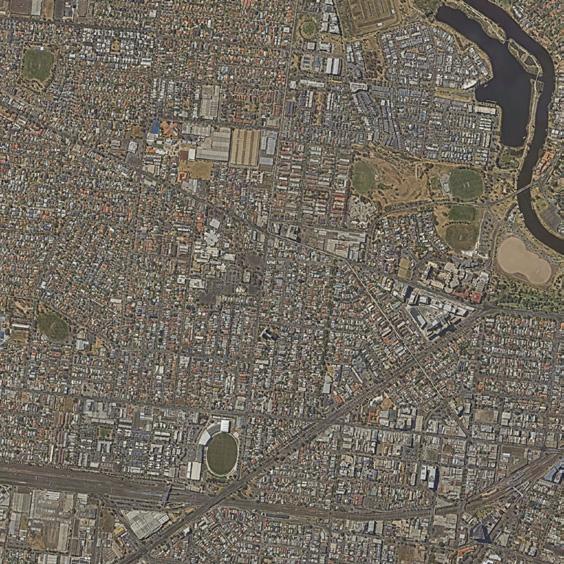



A clear strategy for delivering the key actions is critical to realising the WELL / BEINGS vision for the Health and Education precinct and creating a more liveable Footscray.
Key actions were devised from the fve core strategies and taking inspiration from relevant and appropriate precedents. These actions are targeted at addressing the key issues and implementing key opportunities for the Health and Education precinct.
These actions have been mapped out in a staging plan, which sets out the timing for the key investigation, preparation and delivering and development activities. This implementation strategy also recognises the type of activity and the role of the Council, as well as its key partners in performing each of the actions.
The implementation strategy culminates with the catalyst project - the Droop Street Framework Plan. This plan will set out a road map to achieve a number of the key actions and sparking the new direction for the development of the Health and Education precinct towards achieving the WELL / BEINGS vision.


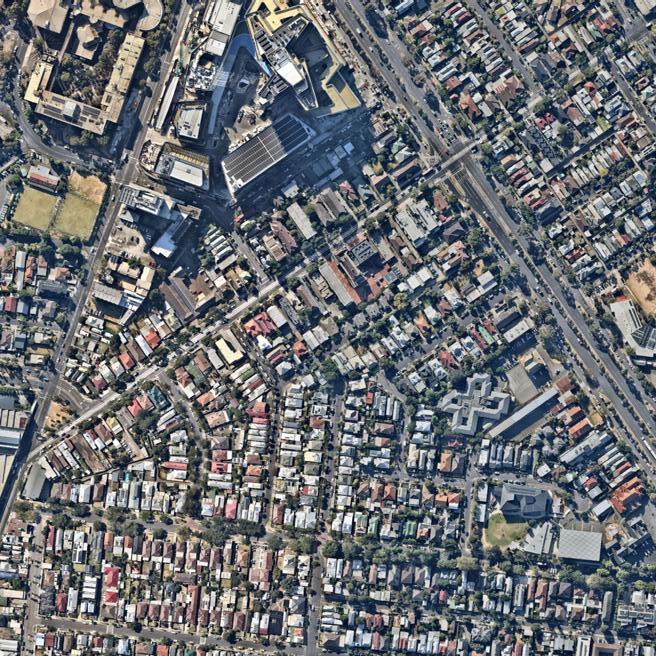




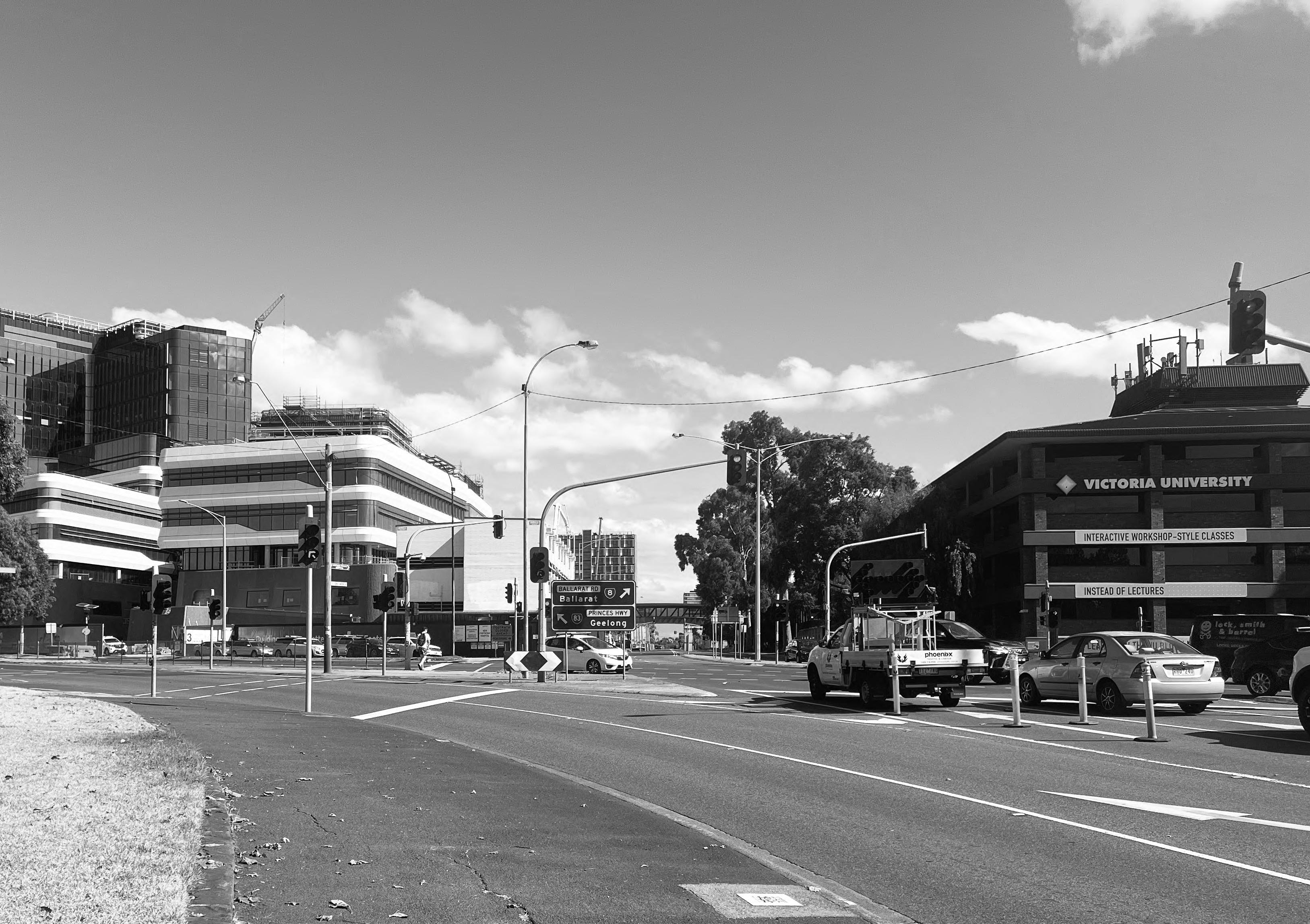
Footscray is a gateway that connects people to Melbourne’s west.
This strategic report - WELL / BEINGS - sets out the vision, key strategies and actions for the Footscray Health and Education precinct.
This report documents the actions and implementation strategy, guided by the vision for the Health and Education precinct, for the future of Footscray as the premier health and education precinct connecting people to Melbourne’s west. This builds upon the work done to date to identify the key issues and opportunities for the Health and Education precinct, considering relevant precedents, theory and case studies (as set out in Chapter 6 to this strategic report (Appendices)).
The WELL / BEINGS vision will be realised through fve core strategies and their corresponding actions - which prioritise future environment, housing, employment, accessibility and community needs to create a more liveable Footscray.


Meeting
Maribyrnong City Council’s objectives and creating a more liveable Footscray requires a combined effort from the private and public sectors, as well as meaningful engagement with communities groups and Traditional Owners.
Issues to be considered
Maribyrnong City Council, as the client, has identifed the following key issues to be considered and addressed:
• greening and green spaces
• increasing mobility, walkability and public transport accessibility
• linking existing medical practices and precincts
• connections between Victoria University, New Footscray Hospital and the Footscray CBD.
Based on the strategies and actions developed for the Health and Education precinct, Maribyrnong City Council will be required to develop comprehensive connections with potential key partners. The strong partnerships established between the Council and the project stakeholders will facilitate coordinated urban development initiatives at the State government, local government and community levels.
These inclusive, multi-layered partnerships can effectively address a wide range of development challenges, having a signifcant impact on the trajectory of Footscray’s urban development.
Maribyrnong City Council and its key stakeholders and partners
DEPARTMENT OF TRANSPORT AND PLANNING
DEPARTMENT OF EDUCATION
WESTERN HEALTH
TRADITIONAL OWNERS
Recommended Involve Strongly Involve

Footscray is one of only two Metropolitan Activity Centres in the west of Melbournemaking it a vital area to invest in for the growing western suburbs population.
The State Government’s Plan Melbourne 2017 - 2050 identifes the unequal distribution of jobs in Melbourne. Suburban and growth areas generally have access to fewer jobs than Melbourne’s central and inner city areas (see fgure 11).
Metropolitan Activity Centres ensure job growth occurs outside the city centre. The Metro Tunnel Project and the existing public transport network will provide employment opportunities in Melbourne’s west and southeast. Higher-density development has also been targeted in several activity centres.
As a Metropolitan Activity Centre, Footscray has the potential to provide a wide range of jobs, activities and housing that are served by public transport to support Melbourne’s west. Footscray is only fve kilometres from the Melbourne CBD and is on the side of the Maribyrnong River, which makes it an ideal location to live, work, play and invest.
A map of Footscray’s location within the context of Greater Melbourne, Metropolitan Activity Centres and the metro rail transport network is shown overleaf.
With the recent development of high density housing apartment towers, Footscray’s street scape is progressively changing, emphasising that Footscray in embracing its identity as a vibrant home to many people within Melbourne’s inner west.
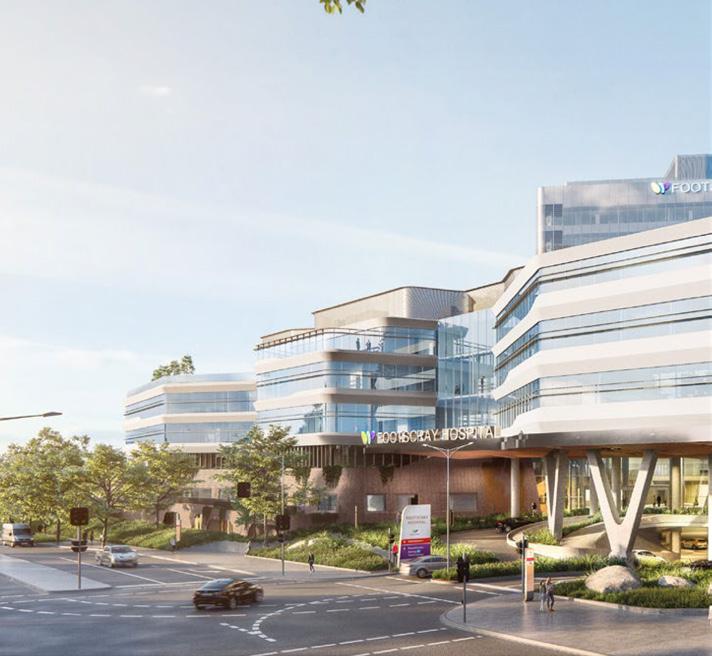
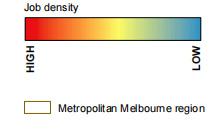


New Footscray Hospital and Victoria University are drawcards to Footscray and mark this area of the suburb as its Health and Education ‘precinct’.
Footscray’s strategic location is enhanced by its public transport network. This network connects Footscray to other health and education precincts around Melbourne, reinforcing its status as a knowledge-based economic hub that encourages collaboration between talent, educational and commercial institutions and health and medical practices.
As the precinct’s main key landmarks, New Footscray Hospital and Victoria University are located across from each other near the Princes Highway and Ballarat Road intersection. These landmarks mark Footscray’s DNA as a health and education precinct with major access to the west of Melbourne.
Located in front of Maribyrnong Boulevard, Footscray Park serves as the main green space of the precinct, providing visibility to the Flemington Racecourse. Not far from New Footscray Hospital is the current Footscray hospital (located at Gordon Street), as well as discrete medical facilities and clinics in the Footscray CBD and at the current Footscray Hospital. Just outside the precinct boundary, the Footscray train station is located on Irving Street. A second Victoria University campus is also located nearby on Nicholson Street.
The key attributes of the Heath and Education precinct are depicted on the following page.

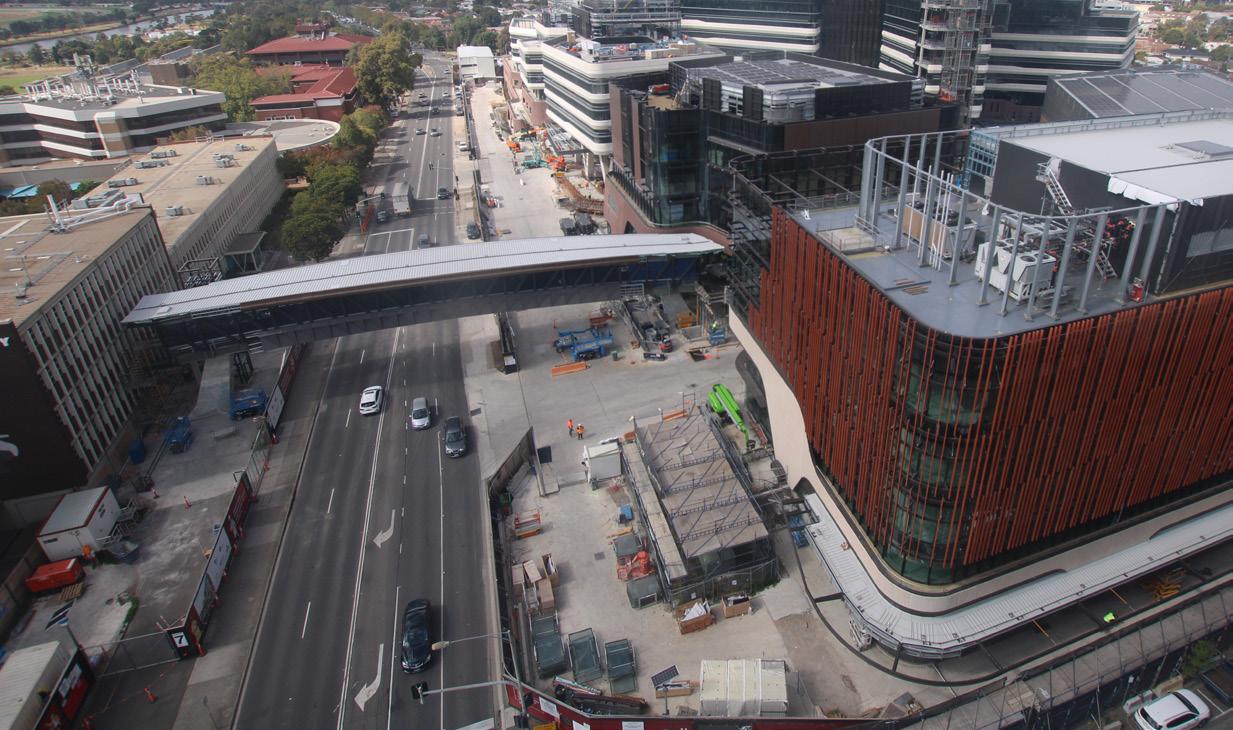



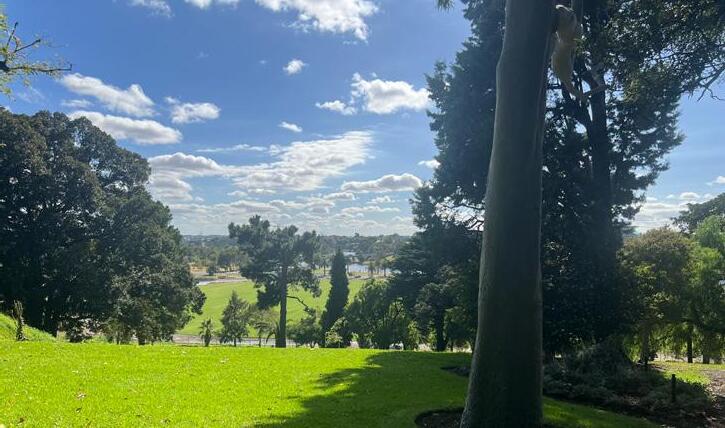
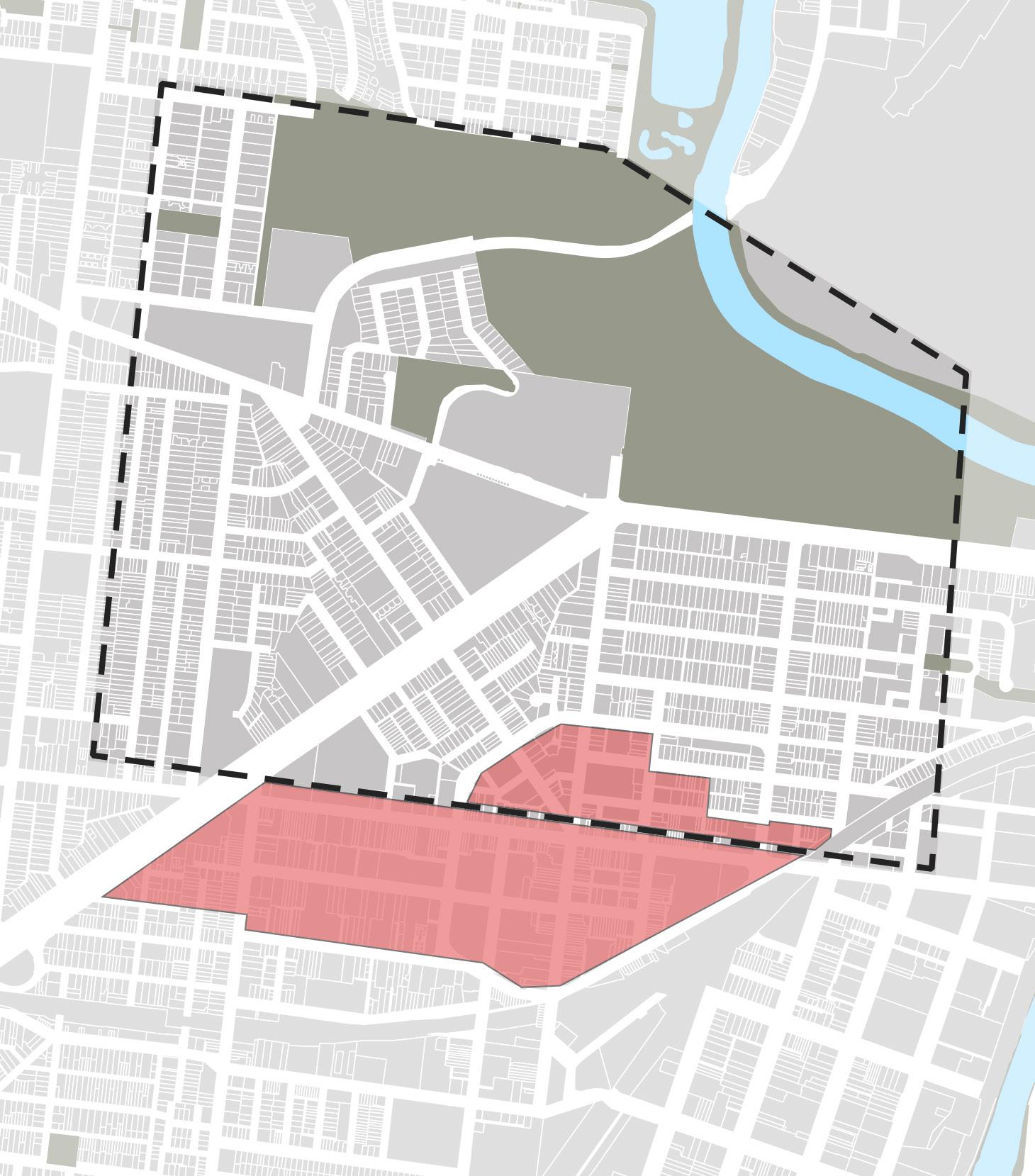
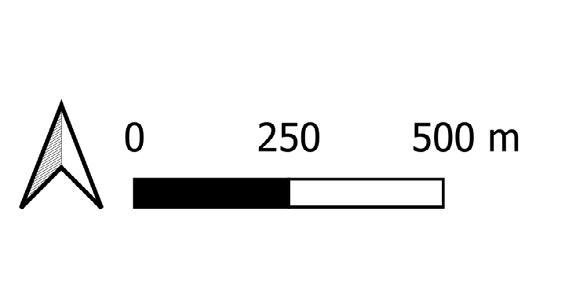

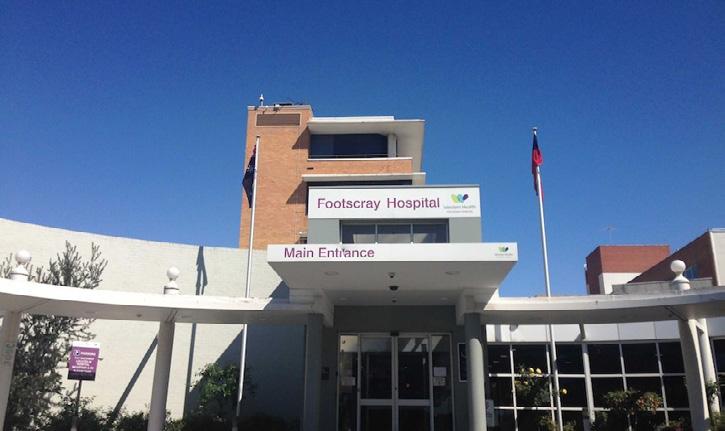


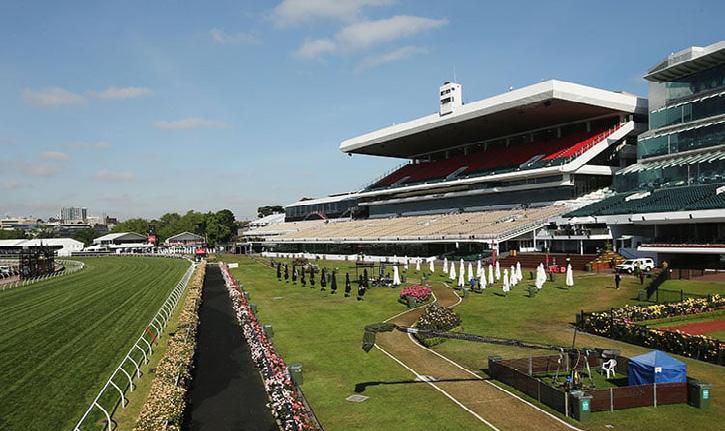
The strategic policies are important planning tools and provide a specifc development direction to Foostscray and the Health and Education precinct - from the metropolitan to the State level.
The following strategic policies have been identifed as prevalent for the Footscray Health and Education precinct:
Plan Melbourne 2017 - 2050
Plan Melbourne identifes Footscray as a Metropolitan Activity Centre (MAC). The objective of the MACs is to provide a diverse range of job opportunities, activities, and housing options for regional catchments that have effcient public transport access. Footscray will serve as a critical hub for government, health and education services, as well as retail and commerical opportunities.
Footscray Structure Plan
The Footscray Structure Plan outlines a vision, the objectives and strategies to achieve the key role of the Central Activities Areas (CAA) (as identifed by current State government policy). The plan provides guidance on land uses within the different precincts, the services and infrastructure and appropriate character and scale of new development.
Footscray Business Opportunity & Directions Paper (FBODP)
The Victorian Government has made signifcant investments in education, health and transport infrastructure in Footscray and Melbourne’s western suburbs to develop Footscray as a ‘Business Precinct’. The FBODP sets out the vision, goals and objectives for the economic, social and cultural outcomes of Footscray.
• PLAN MELBOURNE
• DEVELOPING A NEW PLAN FOR VICTORIA
• VICTORIA’S HOUSING STATEMENT
• MARIBYRNONG ECONOMIC AND INDUSTRIAL DEVELOPMENT STRATEGY
• MARIBYRNONG RIVER MASTER PLAN
• MARIBYRNONG HOUSING STRATEGY 2018
• MARIBYRNONG BICYCLE STRATEGY 2020-2030
• MARIBYRNONG MEDIUM DENSITY DESIGN GUIDE 2023
• A SMART CITY FOR SMART COMMUNITIES - SMART CITY STRATEGIC FRAMEWORK
• OPEN SPACE STRATEGY
• FOOTSCRAY BUSINESS OPPORTUNITIES & DIRECTIONS PAPER
• FOOTSCRAY UNIVERSITY TOWN VISION AND STRATEGIC PRIORITIES 2020-2025
• NEW FOOTSCRAY HOSPITAL AND EDUCATION PRECINCT ADVOCACY PLAN
• FOOTSCRAY STRUCTURE PLAN



Footscray, and the Health and Education precinct in particular, is subject to a number of planning zones, regulating the land use, planning and development in this area.
The following planning zones have been identifed as relevant to the Health and Education precinct:
The Footscray Park and other open spaces within the precinct are zoned as the Public Park and Recreation Zone. This zone protects and conserves areas of signifcance and provides for commercial use where appropriate.
The Neighourhood Residential Zone requires that development respects the identifed neighbourhood character, heritage, environment or landscape characteristics within the zone. Building heights must be predominantly single or double storey residential development.This zone allows educational, recreational, religious, community and a limited range of other nonresidential uses to serve local community needs in appropriate locations.
Activity Centre Zone - Schedule 1 (ACZ1)
The area close to the Footscray CBD is zoned as an Activity Centre Zone. This zone encourages development of housing at higher densities to take full advantage of the nearby facilities and services.
The purpose of this zone is to recognise public land use for public utility and community services and facilities, and provide for associated uses that are consistent with the intent of the public land reservation or purpose. There are a number of sites within the precinct which are zoned as Public Use Zones, for both education (Public Use Zone 2 - PUZ2) and health and community (Public Use Zone 3 - PUZ3).
A large portion of the precinct is zoned General Residential Zone. Development in this zone is intended to respect the neighbourhood character and a diversity of housing types and housing growth. A limited range of other non-residential uses are permitted within this zone to serve local community needs. Residential buildings may accommodate no more than ten persons and at least one car parking space must be provided per two persons.
A small area within the precinct is zoned Mixed Use Zone. This area provide a range of residential, commercial, industrial and other uses which complement the mixed-use function of the area. Higher density housing is permitted and the zoning requirements encourage development which responds to the existing or preferred neighbourhood character of the area.
These planning zones relevant to the precinct are depicted overleaf.


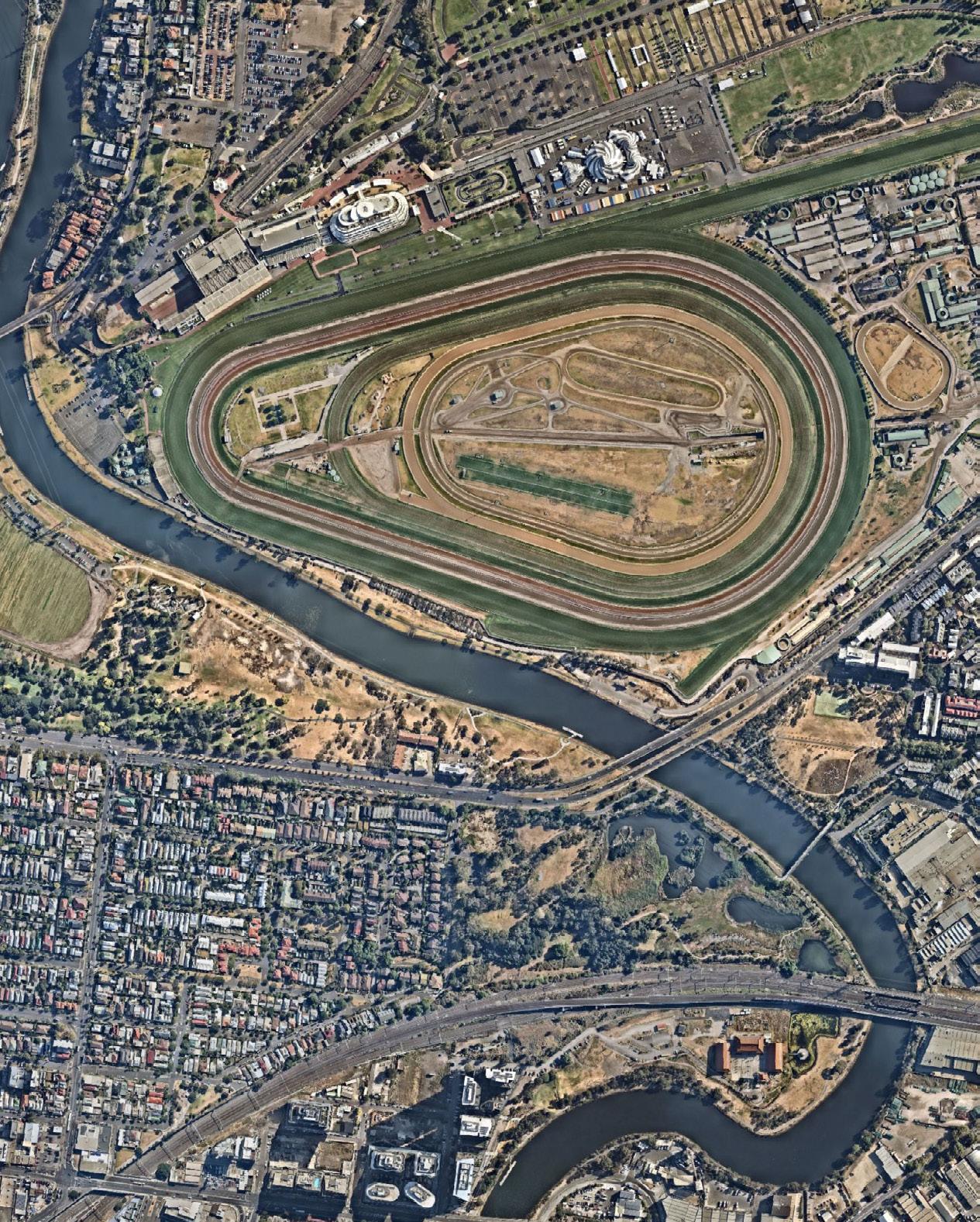





In addition to the planning zones, the Health and Education precinct is subject to a number of planning overlays. These overlays apply special controls to the zones and land uses within the precinct.
The following overlays have been identifed as being particularly relevant to the Health and Education precinct:
Design and Development OverlaySchedule 1
Victoria University and Footscray Park are subject to a Design and Development Overlay. This overlay imposes specifc requirements on the design and built form of new development within these areasfor example, the building heights must not exceed fve metres and buildings must use muted tones and colours.
Heritage Overlay
A large area within the precinct is subject to a heritage overlay. The heritage overlay purports to conserve and enhance heritage structures or areas which are of natural or cultural signifcance and to enhance those elements which contribute to the character of the heritage buildings. In general, development occuring within an area subject to a heritage overlay must not adversely affect the signifcance of heritage structures and buildings.
Subject to Inundation Overlay
This overlay applies to the areas surrounding the Maribyrnong River and Footscray Park. This overlay identifes food prone land and ensure that development maintains the free passage and temporary storage of foodwaters to minimises food damage.
Character OverlaySchedule 2
A small area of the precinct is subject to a Neighbourhood Character Overlay. This overlay identifes areas of existing or preferred neighbourhood character to ensure that any development respects the neighourbood character and prevents the removal of the neighbourhood character features within the area.
These planning overlays relevant to the precinct are depicted overleaf.
Contributions Plan Overlay
Footscray is also subject to the City of Maribyrnong wide Development Contributions Plan Overlay. This overlay applies to all new developments and mandates that developers pay a levy which is pooled for the development of city and community infrastructure.
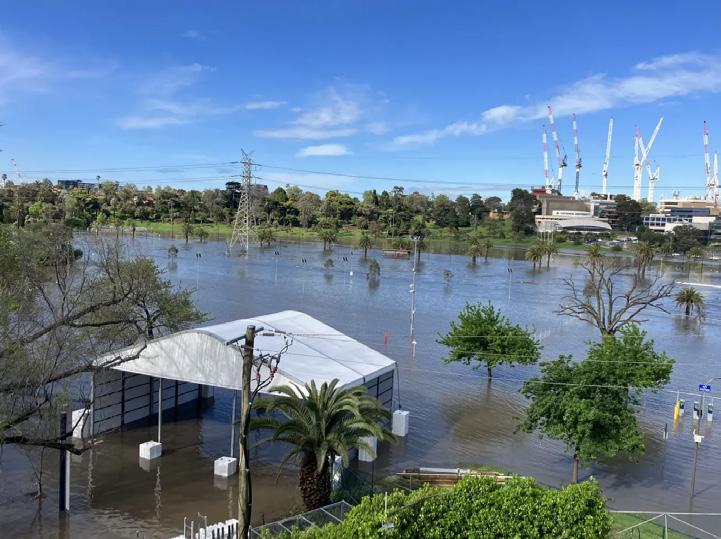
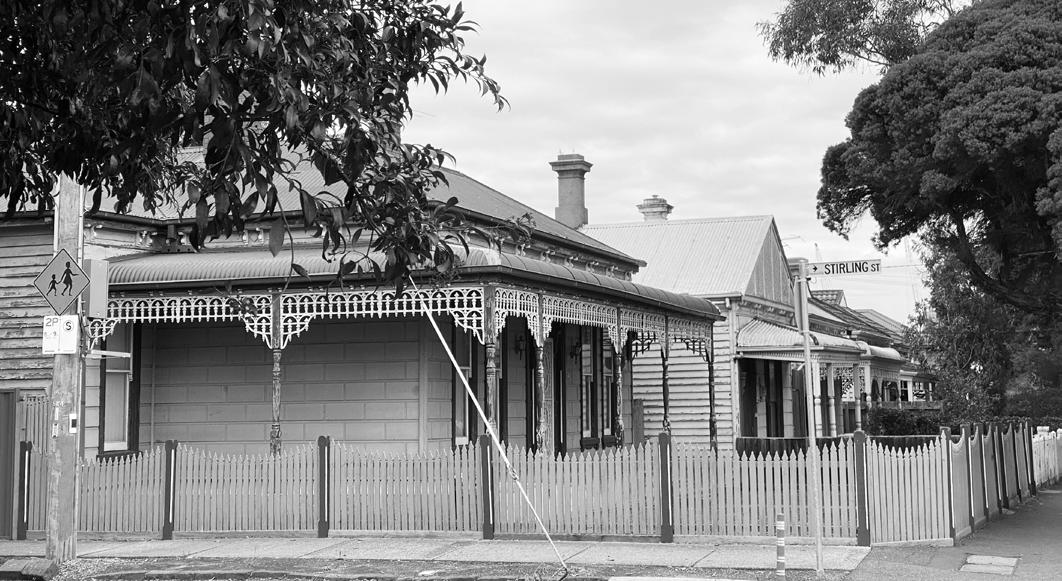
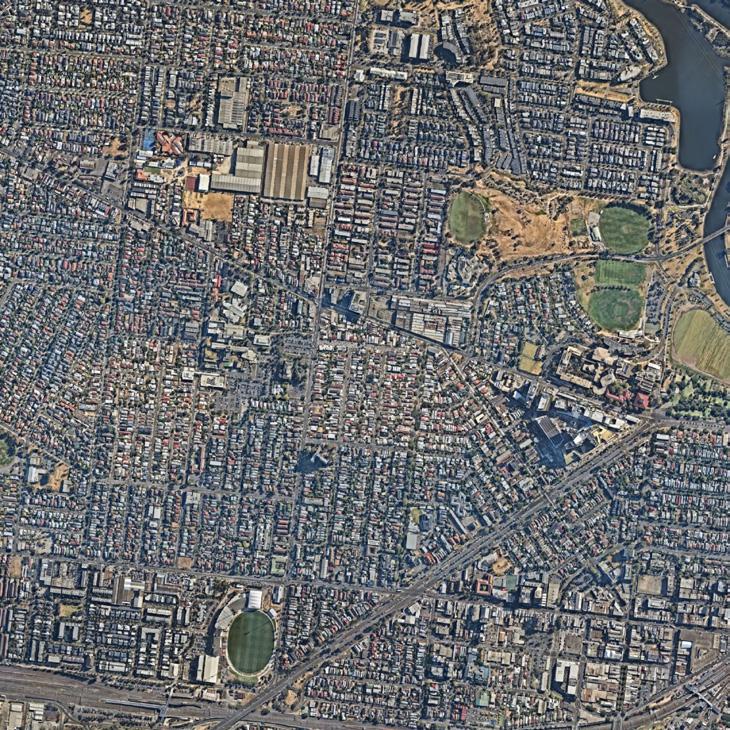
Map of Design and Development Overlay







Map of Neighbourhood Character Overlay


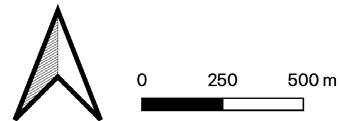




Map of Heritage Overlay


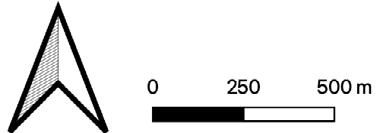




Map of Land Subject to Inundation Overlay






Footscray is located on the lands of the Wurundjeri Woi Wurrung and Boon Wurrung Bunurong people of the Kulin Nation, with a continuing connection to Country of 40,000 years and counting...
Footscray is recognised as a culturally rich and vibrant suburb of Melbourne’s west. However, this is in addition to its strong history and continuing connection of the Traditional Owners - the Wurundjeri Woi Wurrung and Boon Wurrung Bunurong peoples - to Country in Footscray.
The Maribyrnong River is a place of cultural and economic signifcance and connection to the Indigenous people who lived along the river valley for at least 40,000 years. In more recent history, Footscray has also been the location of pivotal Indigenous activism during the twentieth century. Footscray continues to be home to a number of culturally signifcant places and buildings where this activism occurred.
Today, ongoing efforts aimed at promoting and supporting Traditional Owners’ continuing connection to Country are embedded in key Council documents - including the Maribyrnong City Council Plan and its Reconciliation Action Plan.
Local Footscray organisations, such as the Footscray Community Arts Centre and the Living Museum of the West, also play a vital role in elevating the presence of Indigenous people’s ongoing connection to Country, through a range of social, cultural and artistic initiatives.













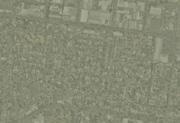












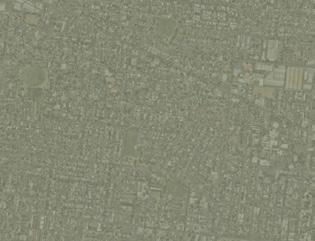



































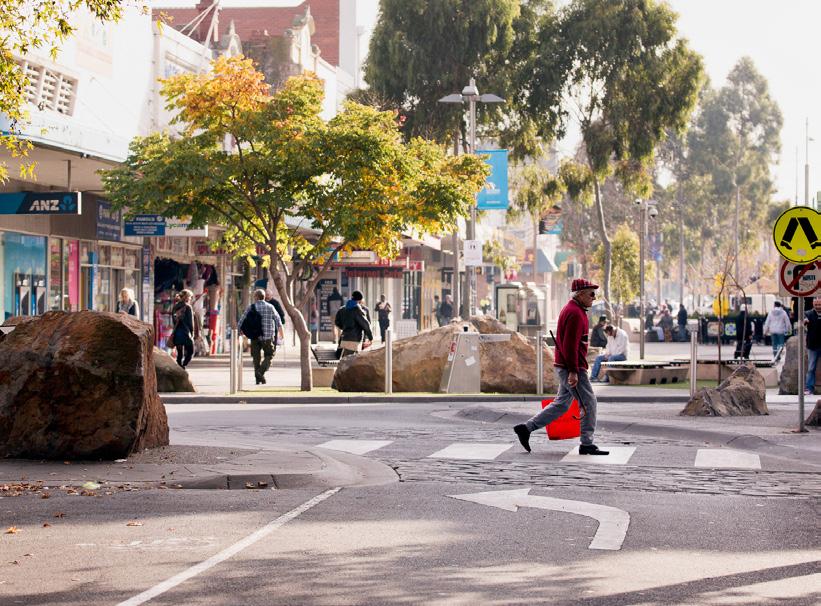





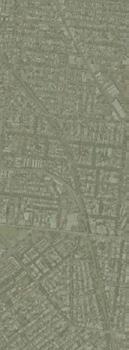









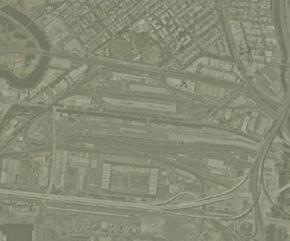



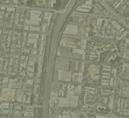





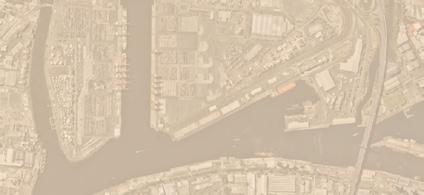
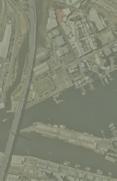




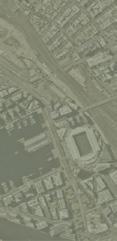




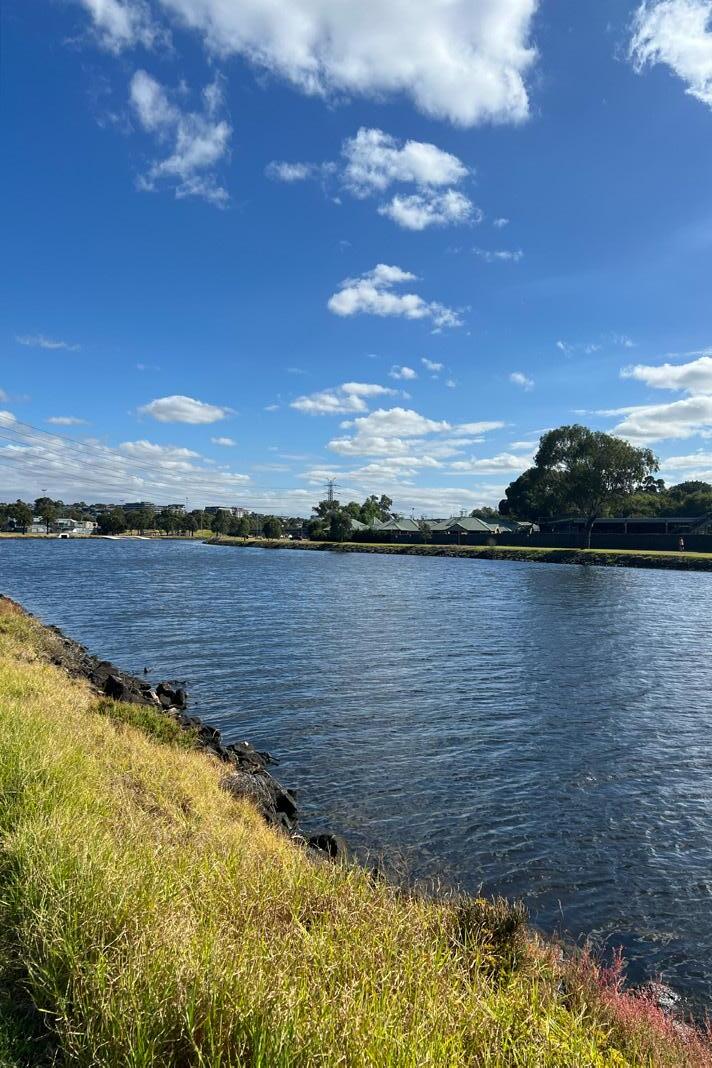
Since the early twentieth century, Footscray has played a key role in servicing the health and education needs of Melbourne’s west.
Footscray’s role in and focus on providing high quality health and education services began with the opening of Victoria University in 1916, and the subsequent opening of the Footscray and District Hospital (currently located at Gordon Street) in 1953.
However, the identity of this area of Footscray in particular as a health and education “precinct” is a relatively new concept, if not an emerging one - with the New Footscray Hospital to be completed in 2025. The relationship between Victoria University and the New Footscray Hospital, and to Footscray and the west more broadly, is expected to truly activate this area as a health and education hub.
The journey of Footscray’s health and education “precinct”, has occurred against the backdrop of diverse social, cultural and economic events. Understanding how these events all contribute to defne the suburb of Footscray as it is today is critical to the development of the strategies for the realisation of the WELL / BEINGS vision for the Health and Education precinct.
The demographics of Footscray and Greater Melbourne highlights why Footscray can succeed as a key health and education precinct within Melbourne’s west.
The combination of Footscray’s population being forecast to double (see fg. 32) and the rapid population growth of over 40% in Melbourne’s western suburbs* by 2036, is a strong driver for healthcare and education facilities in the west to support these communities. With the New Footscray Hospital supporting approximately 5,000 job opportunities, it will be of great importance to include provision of housing for key workers in the health and education precinct.
Other demographics also paint a picture of the residents living in Footscray. For example, as set out in fgure 33, the age group of 2534 contributes to the greatest proportion of population in Footscray. In addition, single person (38%) and two person households (34%) dominate the household size distribution, with an average of 2.1 people per household (see fg. 34). This implies the need for the development and supply of smaller dwellings for Footscray’s residents.
*Western suburbs includes the suburbs within the following local government areas: Cities of Brimbank, Hobsons Bay, Maribyrnong, Melton, Moonee Valley and Wyndham.








Comparing the demographics between Greater Melbourne and Footscray (see fg. 35), the percentage of Footscray residents with places of birth outside Australia (49%) is higher than that of Greater Melbourne residents (40%), emphasising its the diverse and culturally rich nature of its population.
Footscray is also an active city in comparison to Greater Melbourne, with more Footscray residents taking active or public transport (including biking or walking), highlighting the importance of an effcient public transport network, bicycle network and pedestrianfriendly footpaths.
Finally, a higher percentage of Footscray residents work at home. This emphasises that there is greater need for high quality public amenities in Footscray, with residents more likely to stay within close proximity to their homes during the week.
PLACE OF BIRTH OUTSIDE AUSTRALIA








PUBLIC/ ACTIVE TRANSPORT TO WORK





WORK FROM HOME



35. Comparison of place of birth, transport and working from home demographics between Footscray and Greater Melbourne.
Data Source: Australian Bureau of Statistics, “2021 Footscray, Census All Persons QuickStats | Australian Bureau of Statistics,” Australian Bureau of Statistics, 2021 ABS, “2021 Greater Melbourne, Census All Persons QuickStats | Australian Bureau of Statistics,” Australian Bureau of Statistics, 2021. ABS, “2021 Footscray, Census Community Profles Australian Bureau of Statistics,” Australian Bureau of Statistics, 2021. ABS, “2021 Greater Melbourne, Census Community Profles Australian Bureau of Statistics,” Australian Bureau of Statistics, 2021. Department of Transport and Planning, “Victoria in Future 2023,” September 2024. Sambul, Najma. “Inside the New $1.5 Billion Footscray Hospital.” The Age, March 26, 2024.
The people of the Health and Education precinct provide an insight into the community that work and thrive in this area, as well as a snapshot into the culturally rich and diverse Footscray community.
Liliana Bravo - small business owner - Casa Bonita
Liliana is the founder of Casa Bonita - a small business which sells artisan and Indigenousmade goods from Liliana’s native Colombia, provides business coaching services and is also the site of cultural and networking events.
Casa Bonita currently operates from the Victoria University Footscray Park campus. Liliana resides in West Footscray with her family.
Source: Minter, Elizabeth. “CHAMPIONS OF THE WEST – Liliana Bravo, Casa Bonita Lifestyle.” The Westsider (Melbourne), March 1 2024. https:// thewestsider.com.au/champions-of-the-west-liliana-bravo-casa-bonita-lifestyle/.
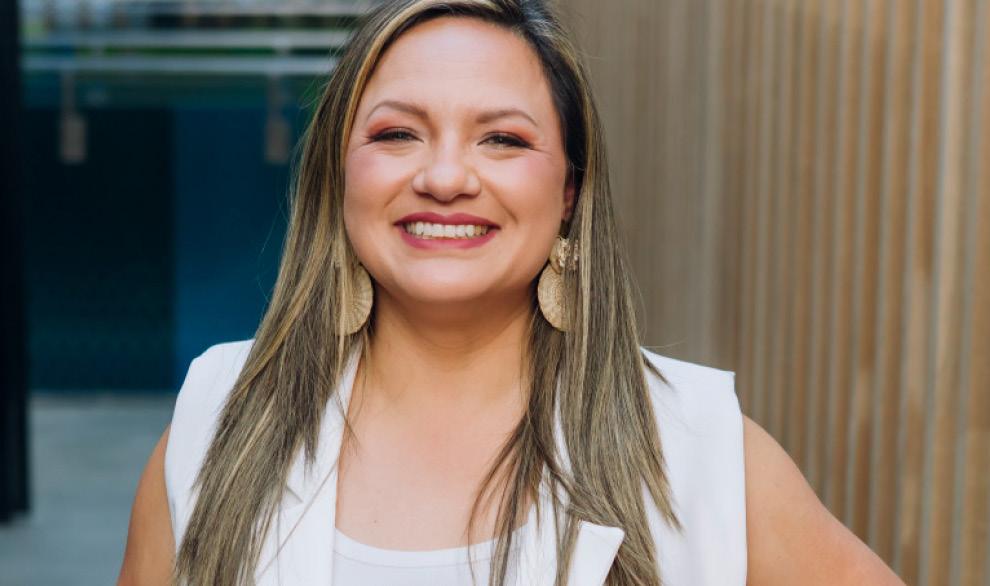
“I love that my children have two languages and that they have so much opportunity to learn about other cultures and diversity and inclusion.”
“The thing I love most about Footscray is that it’s a place that ...makes you feel safe enough to be you...”
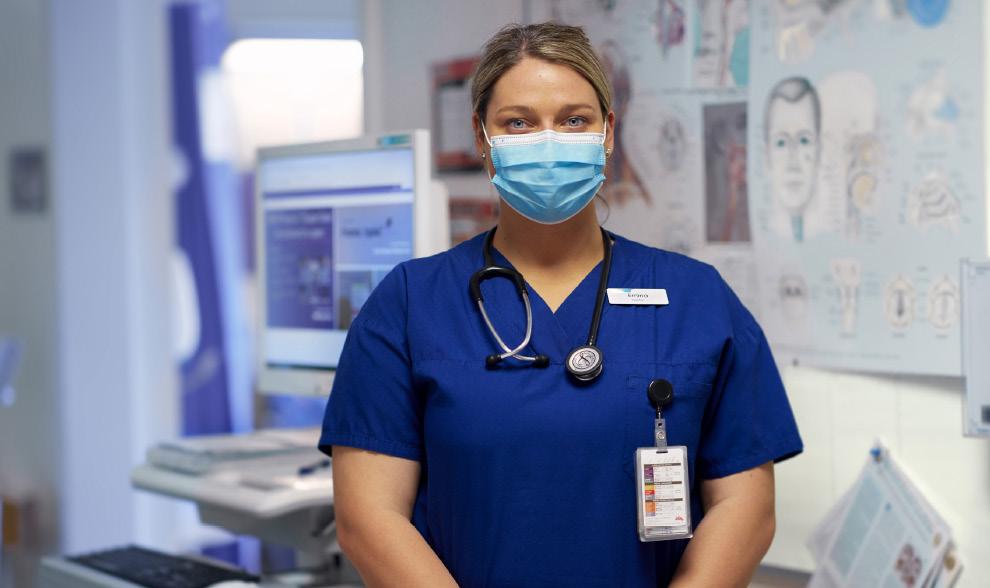
Dr Emina Hajdarevicjunior doctor - Western Health Footscray Hospital
Emina is a junior doctor at the current Western Health Footscray Hospital. Raised in Melbourne’s western suburbs, Emina is of Bosnian descent, with her parents having come to Australia as refugees in 1993.
Growing up, Emina was surrounded by the “sounds, sights and smells of Footscray” and hopes that “Footscray continues to be a melting pot of people and culture that empathises, understands and supports its people.”
Source: Footscray Community Arts. “Faces of Footscray.” The Westsider (Melbourne), December 1 2023, https://thewestsider.com.au/faces-of-footscraydr-com/809651476. Footscray Community Arts. “Faces of Footscray with Dr. Emina Hajdarevic.” Accessed April 10, 2024. https://vimeo.com/809651476.
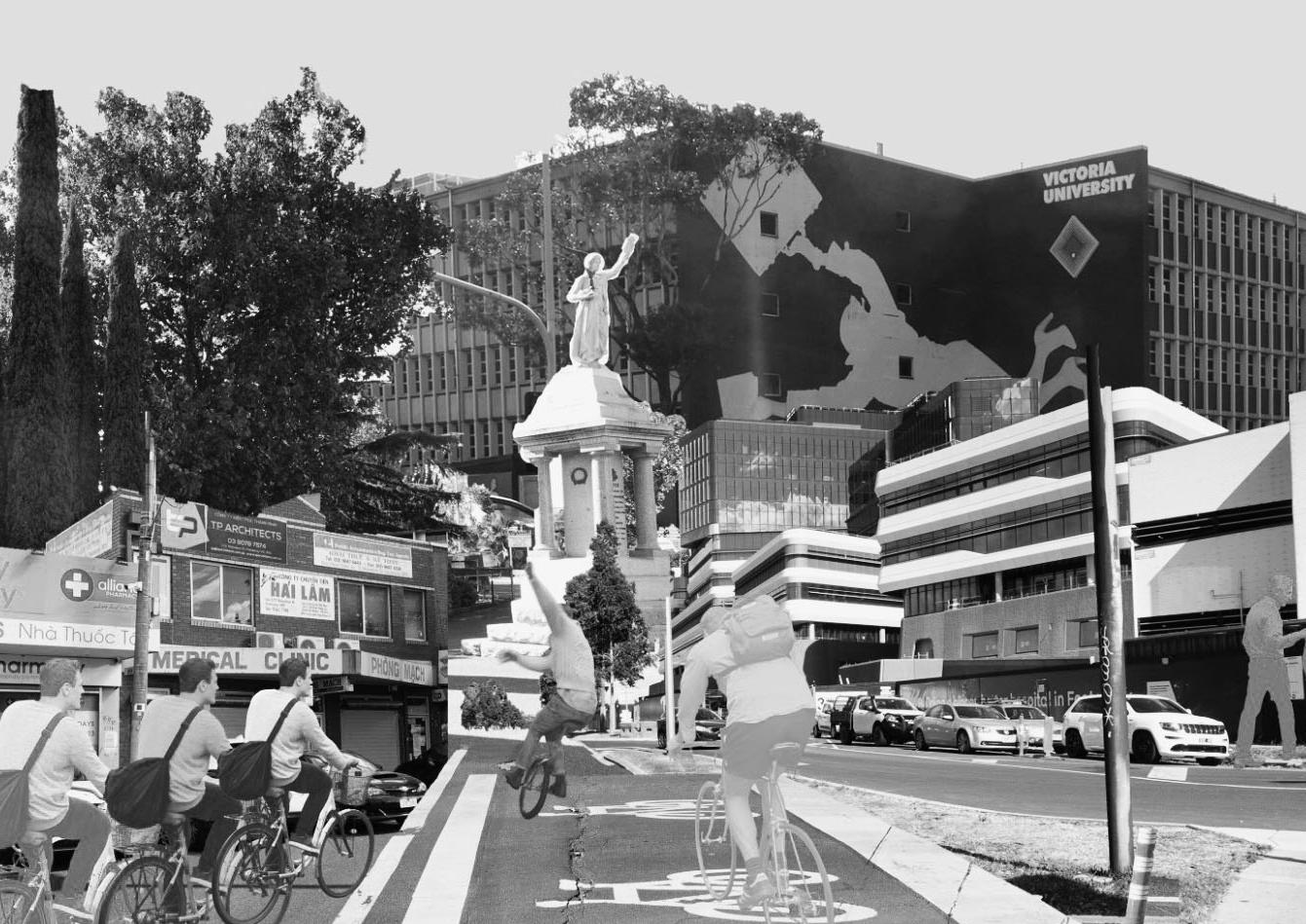
Footscray is a premier health and education precinct connecting people to Melbourne’s west.
Footscray is responsive to the wellbeing of Footscray’s people, through access to high quality green and open spaces, safe active modes of transport, appropriate and affordable housing and a diverse and student-driven community.
COMMUNITY





The realisation of the Footscray Health and Education precinct WELL / BEINGS vision will be achieved by implementing the fve key strategies.
1. Connecting people sustainably: Facilitate alternative and active modes of transport to allow people to connect and move safely and sustainably between the hospital and university precincts and the Footscray CBD.
2. Accessible green spaces: Enhance and provide green and open spaces, extending the qualities of Footscray Park and the Maribyrnong River throughout the precinct to connect Footscray residents more readily to high quality, climate resilient open spaces.
3. Housing key workers and students: Provide and facilitate the development of high quality affordable and key worker accommodation to support the current and incoming key worker and student populations.
4. Respecting and reinvigorating culture: Develop Footscray’s identity as a ‘University Town’, while maintaining and supporting its unique and diverse community and Indigenous culture.




5. Destination: health and education: Maintain and strengthen Footscray’s role as a premier health and education destination in Melbourne’s west and facilitate access to the New Footscray Hospital, Victoria University and surrounding medical and education facilities.


RESPECTING AND REINVIGORATING CULTURE
DESTINATION: HEALTH AND EDUCATION




The following targets have been identifed to guide the future actions for the Footscray Health and Education precinct and to achieve the WELL / BEINGS vision.
*Population targets are approximate and based on 2021 ABS Census data and population forecasts from ProfleID. to 14,400
TRANSPORT
50% increase* in use of active transport ENVIRONMENT
Decrease* Urban Heat to between 2-5 degrees celsius.
3380 additional dwellings*^
(^5% key worker and student housing)
CULTURE
Victoria UniversityMaribyrnong City Council partnered events - 3 times per year
50% increase in pedestrian fow*
*Increase based on 18.8% use of active and public transport as mode to travel to work, per 2021 ABS Census data.
*Decrease based on 2018 Urban Heat of 5 - 10 degrees celcius. Source: State Government of Victoria, Department of Transport and Planning.
*Based on projected increase in population of 7,100 by 2050 and average of 2.1 person per household based on 2021 ABS Census data.
*Current pedestrian fow unknown at present.
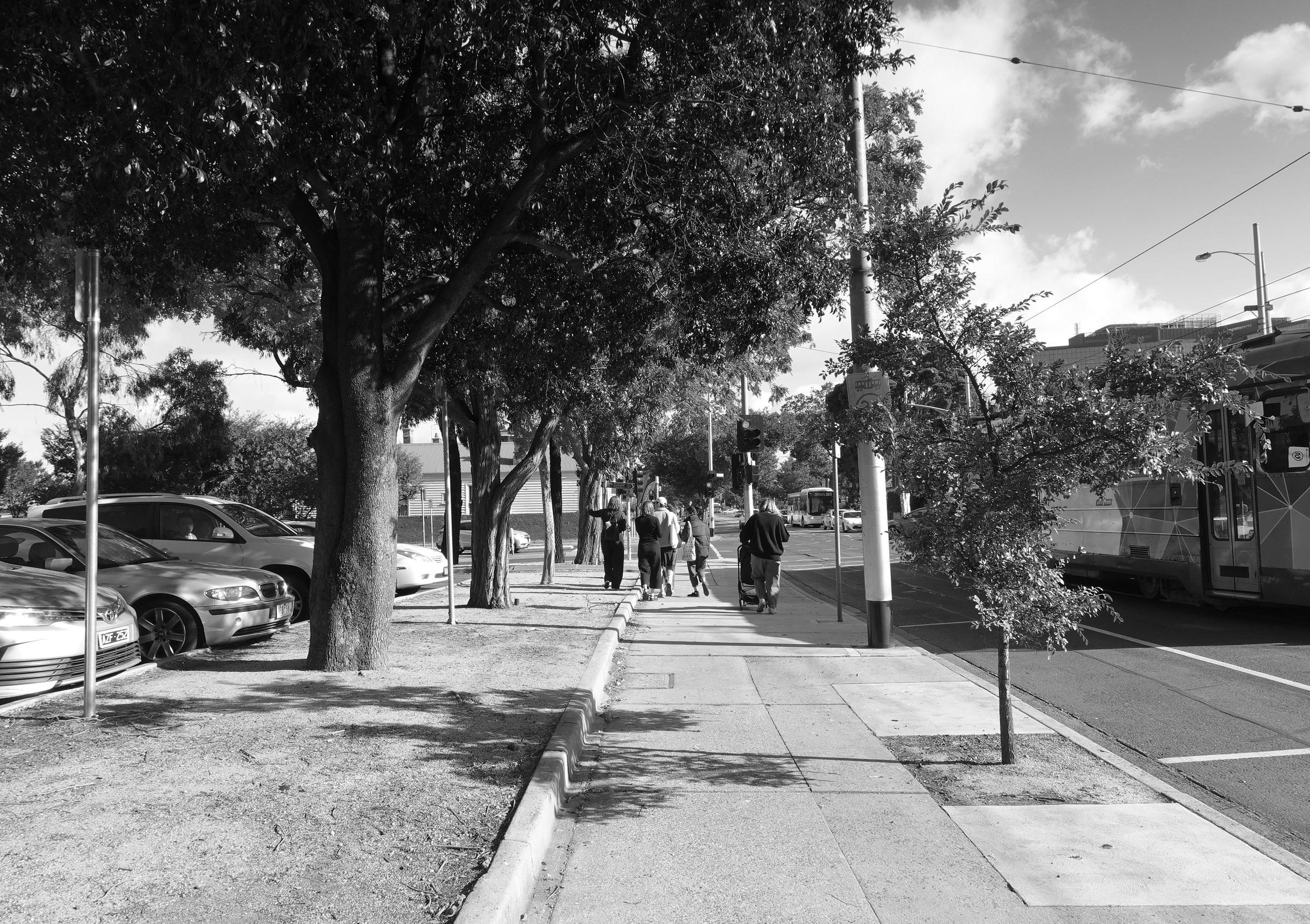
The Health and Education precinct has a number of key challenges to be addressed.
Key connecting routes within the precinct, linking the New Footscray Hospital, Victoria University campuses (Footscray Park and Nicholson Street) and Footscray CBD:
• lack a pedestrian focus (over motor vehicles) and can be improved to enhance walkability and pedestrian access
• lack adequate dedicated cycling infrastructure (e.g. Droop Street, which has no cycling lane).
Greening and open spaces
• Green open spaces are concentrated in the precinct. While this provides trees and greenery, these spaces are separated by major aerterial roads, affecting accessiblity.
• Surrounding streets provide tree canopy cover but there is potential to increase urban greenery and mitigate impacts of the climate crisis (e.g. urban heat, fooding).

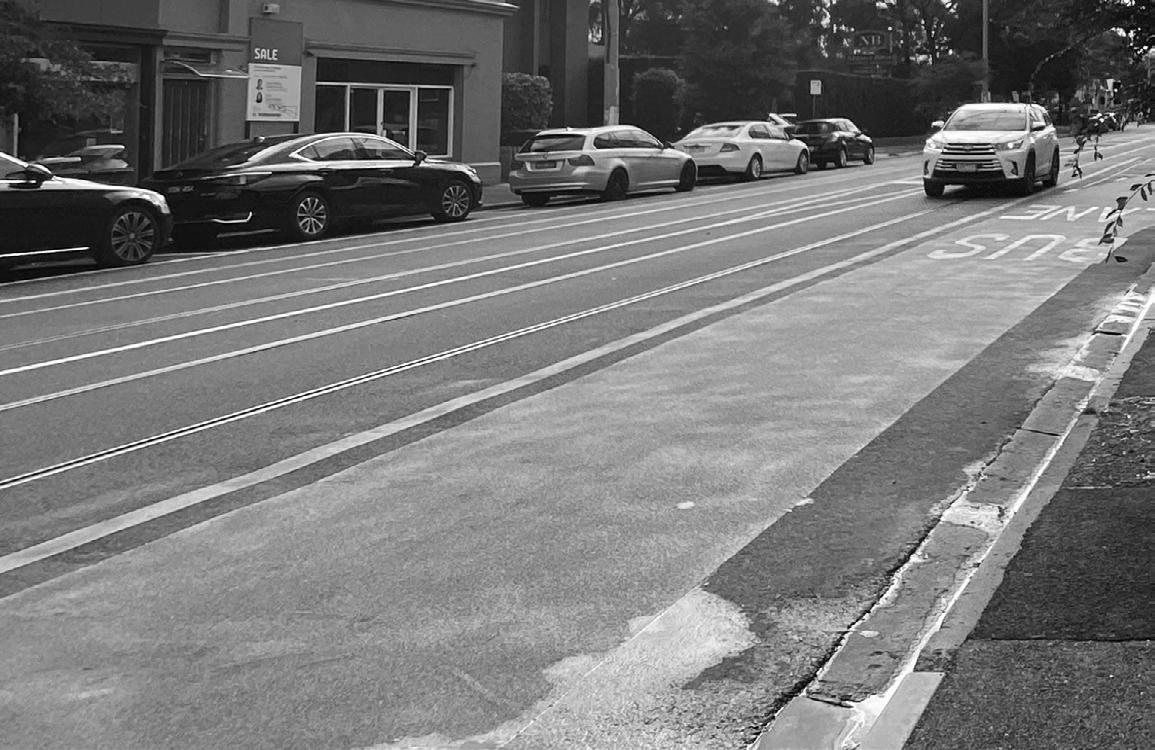
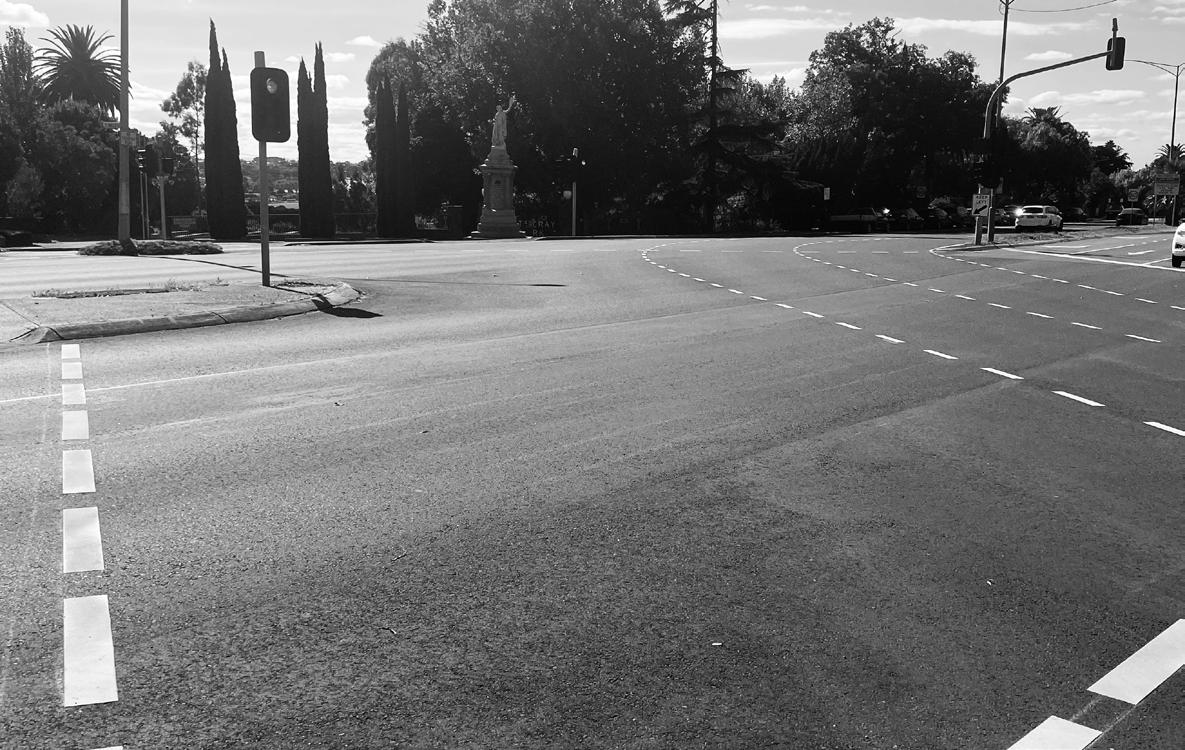

Housing (built form and typology)
• The Health and Education precinct currently has little affordable housing to support key workers and students.
• Housing is generally characterised as low rise, low density, with the potential for areas to be redeveloped to increase density.
• The low-rise nature of residential dwellings creates an unharmonised building scale (e.g in comparison to the New Footscray Hospital).
• There are a number of discrete medical practices throughout the precinct, as well as in other areas of Footscray. These could be better connected to and within the Health and Education precinct to boost its health and education identity.
• Victoria University Footscray Park campus is a key pillar of the Health and Education Precinct but it is phyiscally separated from the Footscray CBD and the Victoria University Nicholson Street Campus. There is potential to improve connections - both physically and to the Footscray community.


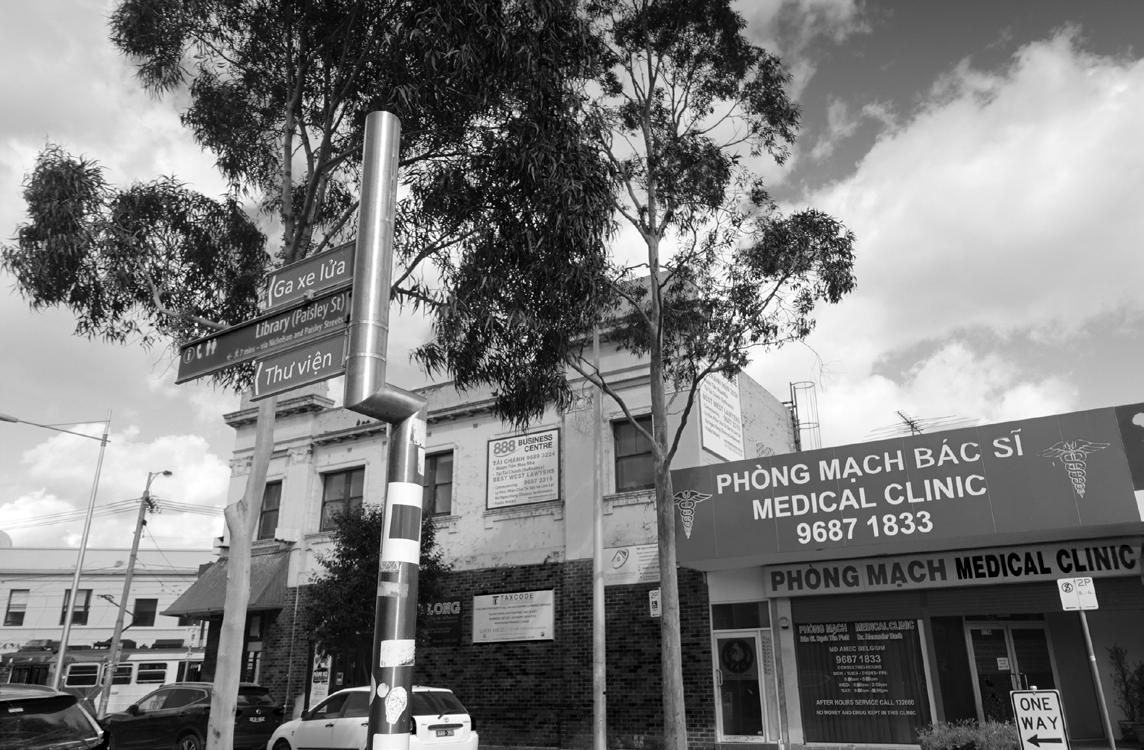


The issues and challenges identifed give rise to a number of opportunities - guiding the strategies and actions for a more liveable Footscray through the Health and Education precinct.
Strategy 1:
Facilitate alternative and active modes of transport to allow people to connect and move safely and sustainably between the hospital and university precincts and the Footscray CBD.
Priority actions:
Cycle network upgrades
Implement upgrades to the cycle network within the Health and Education precinct to provide cycling path for key connecting routes along Droop Street, Tiernan Street and Ballarat Road.
Pedestrian infrastructure improvements
Implement upgrades to footpath along Droop Street, Tiernan Street and Nicholson Street and establish pedestrian crossings at key high traffc areas (e.g. replacing traffc lights at Donald Street / Nicholson Street intersection).



Advocate for tram super stop
Advocate to the State Government for a ‘super stop’ along Route 82 at Droop Street / Tiernan Street intersection (stop 60) which is key connection to Victoria University and the New Footscray Hospital.




These priority actions target areas identifed as requiring improvement and to enhance both pedestrian experience and the active transport networks along key connecting routes between Victoria University campuses, the New Footscray Hospital and the Footscray CBD.
These actions contribute to achieving the ‘Connecting People Sustainably’ strategy and Transport target by:
• Cycling network upgrades: improving and extending the cycling network within the Health and Education precinct. This creates a safer active travel experience to connect people more readily between Victoria University campuses, New Footscray Hospital and the Footscray CBD.
• Pedestrian infrastructure improvements: creating safer and more pedestrian accessible routes helps to encourage walkability through the Health and Education precinct and can adjust the hierarchy of transportation users - to put pedestrians above cars (e.g. replacing traffc lights with pedestrian crossings to prioritise pedestrian movement).
• Advocate for tram super stop: building on the Council’s advocacy to date, continuing to advocate for a super stop at the Tiernan Street / Droop Street intersection (Stop 60) would promote the importance of having an accessible active transport route and connections to the New Footscray Hospital and Victoria University Footscray Park campus.
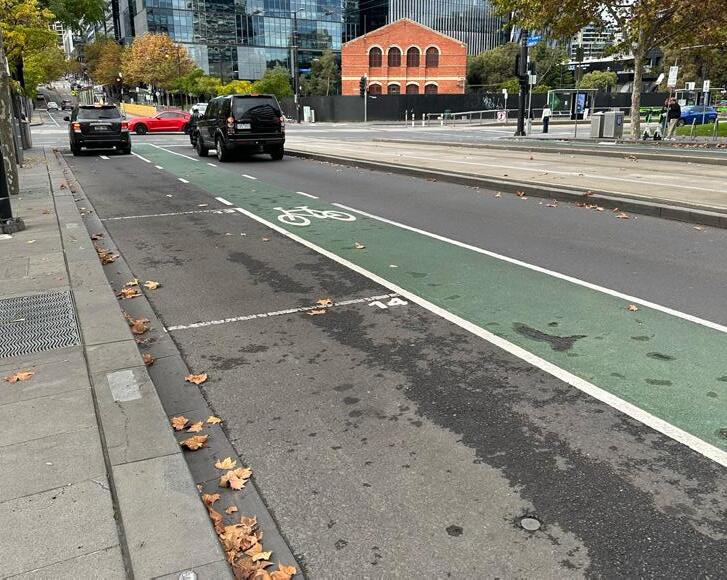
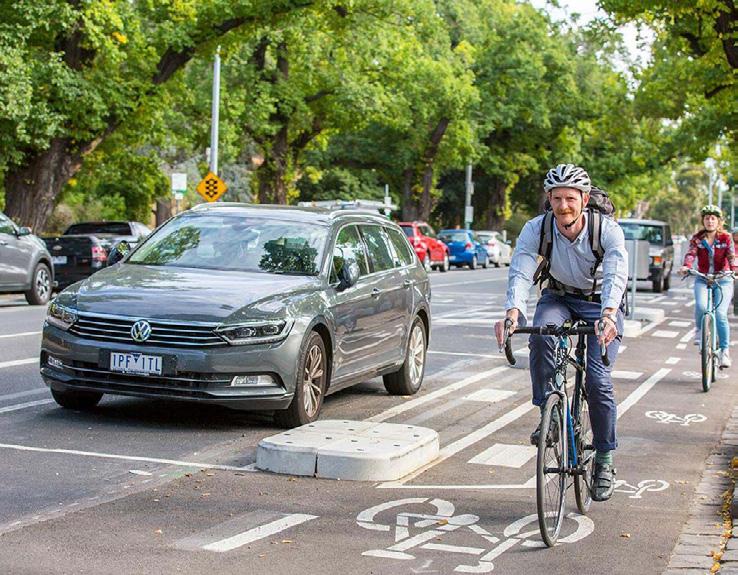
PEDESTRIAN INFRASTRUCTURE IMPROVEMENTS


Strategy 2: Enhance
and provide green spaces, extending the qualities of Footscray Park and the Maribyrnong River throughout the precinct to connect Footscray residents more readily to high quality, climate resilient green spaces.
Priority actions:
Green corridor network
Provide green biodiversity corridors along Droop Street and the key connecting routes through the precinct.
Green infrastructure project
Implement a pilot green infrastructure project (as part of a proposed mixeduse development at Council owned Donald Street car park).
Prepare and implement a planning scheme amendment to impose minimum green infrastructure for new developments.
These priority actions aim to increase access to greenery and green spaces within a largely urbanised area - a key issue for the Health and Education precinct - and to set Footscray up for success in creating a greener and more climate resilient environment.
These actions contribute to achieving the ‘Accessible Green Spaces’ strategy and the Urban Heat reduction target by:
• Green corridor network: creating a network of biodiverse, green corridors which extend from Footscray Park and connect existing green spaces - starting with the Droop Street ‘Green Spine’. This contributes to increasing greenery, tree canopy cover and biodiversity (with a focus on Indigenous species). Building and street occupants have greater connection to the natural environment.
• Demonstration green infrastructure project: implementing a council led demonstration green infrastructure project contributes to urban greening and provides an opportunity to record data of the environmental, sustainability and wellbeing benefts of green infrastructure - to guide future projects.
• Mandatory green infrastructure / grants for sustainability improvements: green infrastructure has a multitude of benefts, including from an environmental and sustainability perspective (e.g. mitigates urban heat, food risk). Imposing mandatory green infrastructure requirements ensures that new developments contribute to climate mitigation measures. A grants program would enable private landowners to implement sustainability upgrades for existing developments.

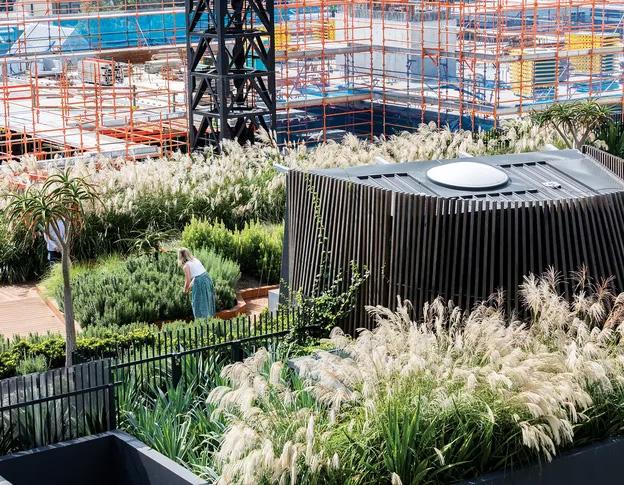
GREEN INFRASTRUCTURE REQUIREMENTS

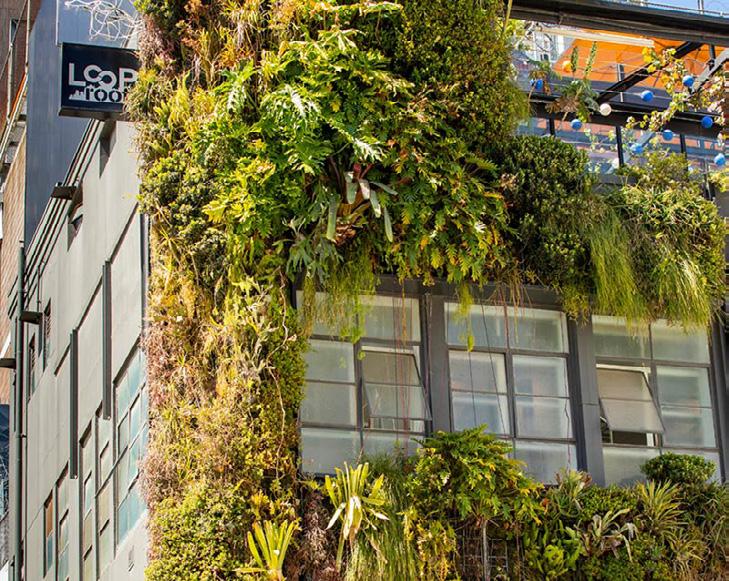
Strategy 3: Provide and facilitate the development of high quality affordable and key worker accommodation to support the current and incoming key worker and student populations.
Priority actions:
Development Contribution Plan Overlay
Amend existing local government area (Maribyrnong) wide development contributions plan to include affordable housing contribution in Footscray.
Investigate rezoning for housing supply
Investigate to rezone General Residential Zone (GRZ) and Neighbourhood Residential Zone (NRZ) to RGZ and Special Use Zone (SUZ) to promote higher density housing development.
Investigate development at strategic sites on Droop Street
Investigate opportunity for signifcant redevelopment of higher density housing adjacent to New Footscray Hospital (including site which is currently a motel).
Deliver housing at strategic site (Donald Street car park)
Deliver key worker and student housing at Council owned Donald Street car park site.
HOUSING
3380 additional dwellings* (*5% key worker and student housing)
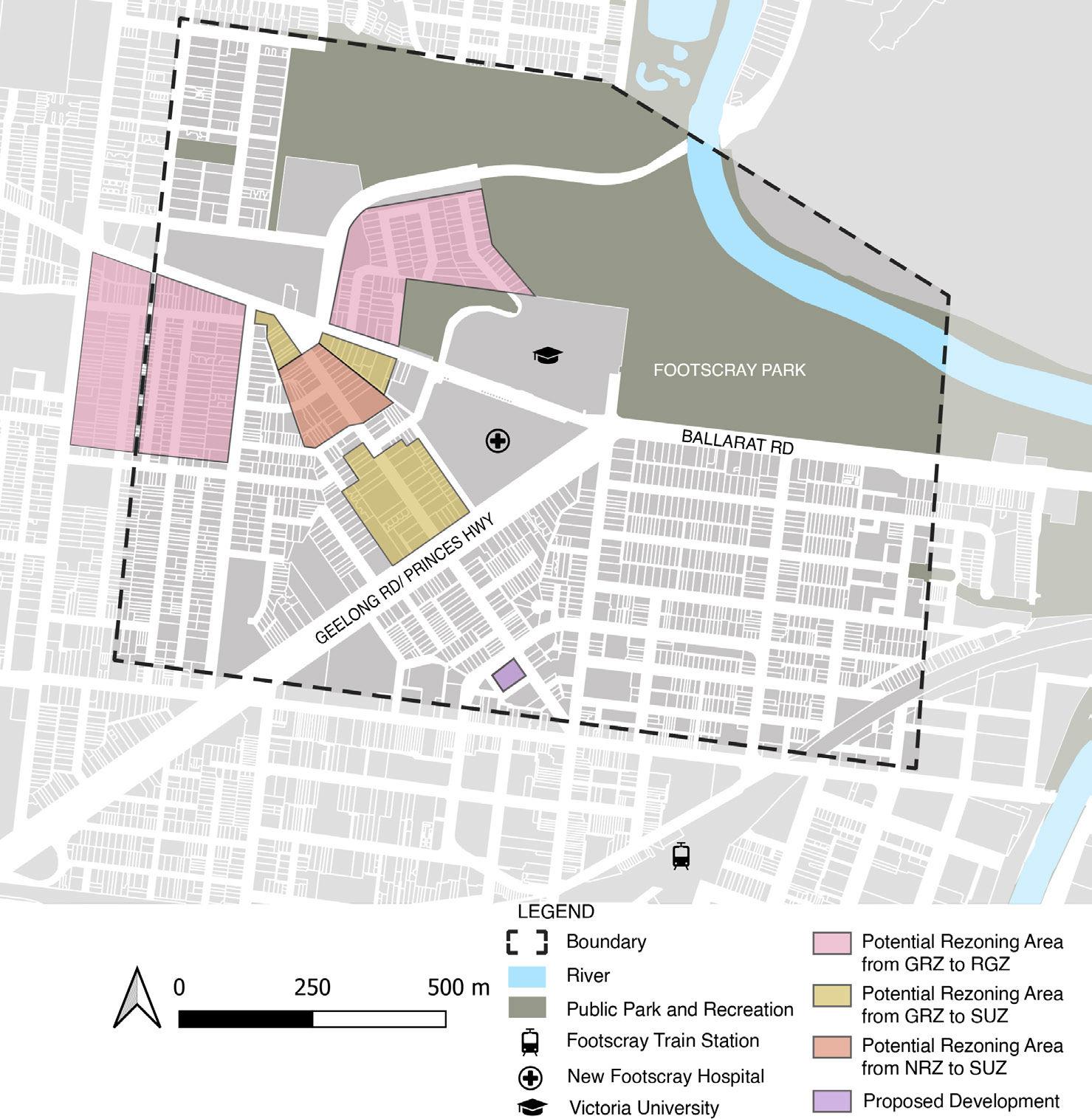
These priority actions target the delivery of higher density and affordable housing, with a strategic focus on housing key workers and students within the Health and Education precinct and harmonising building scale in areas adjacent to the New Footscray Hospital.
These actions contribute to achieving the ‘Housing Key Workers and Students’ strategy and Housing target by:
• Development Contributions Plan Overlay: amending the existing Development Contribution Plan to require an affordable housing component or contribution can promote the development of more affordable housing within Footscray.
• Investigate rezoning opportunities: investigating rezoning selected areas for more housing and mixed uses can identify opportunities for increased housing development, appropriate commercial offerings and varying building heights (e.g. 11-13.5m along main road, and 9-11m along local road) to promote harmonised building scale.
• Investigate signifcant redevelopment: investigating opportunities for housing intensifcation and redevelopment along Droop Street (e.g. private motel located at 90 Droop Street) and adjacent to New Footscray Hospital can identify opportunities to deliver strategically located housing.
• Develop strategic site on Donald Street for housing: developing the Council owned Donald Street car park as a housing / mixed use development can directly deliver more housing for priority groups (i.e. key workers and students).
DEVELOPMENT CONTRIBUTIONS PLAN OVERLAY
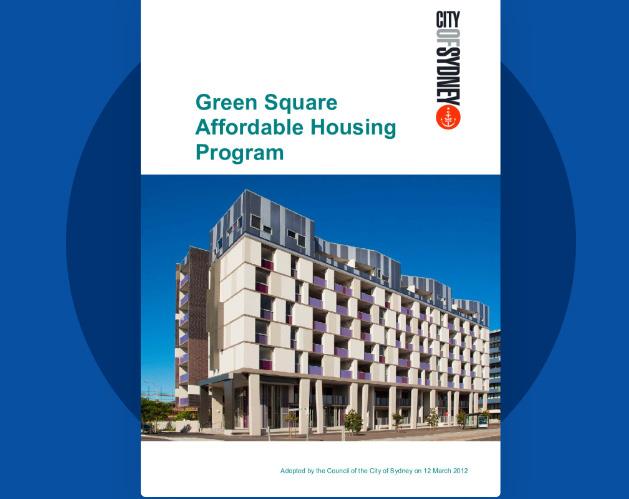
INVESTIGATE TO REZONE FOR HOUSING SUPPLY AND LIVEABILITY

INVESTIGATE STRATEGIC REDEVELOPMENT NEAR NEW FOOTSCRAY HOSPITAL
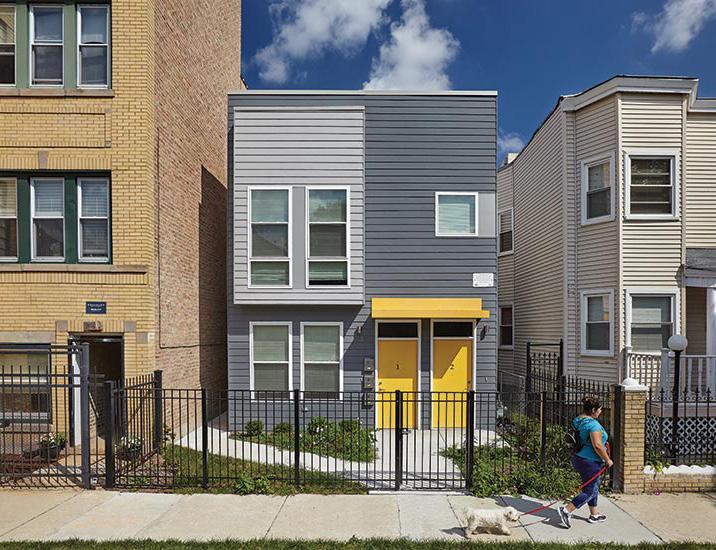
KEY WORKER AND STUDENT HOUSING (DONALD STREET CAR PARK)
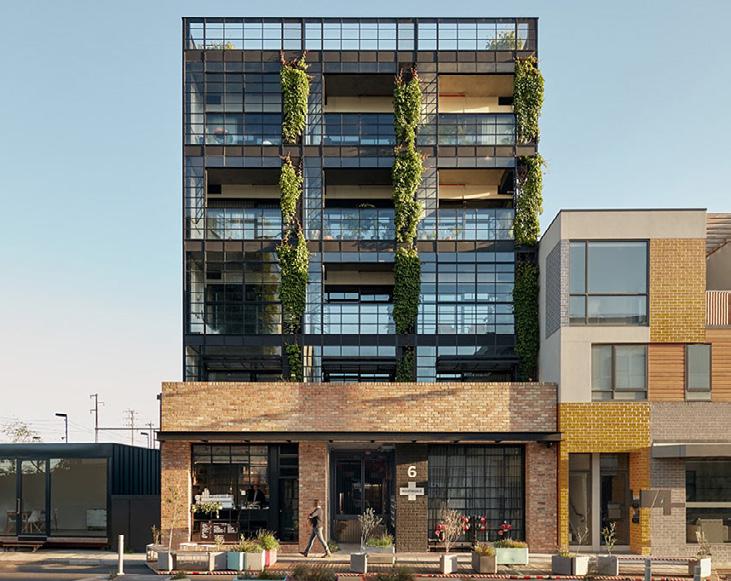
Strategy 4: Develop Footscray’s identity as a ‘University Town’, while maintaining and supporting its unique and diverse community and Indigenous culture.
Priority actions:
Investigate and prepare commercial opportunity framework plan
Investigate the introduction of studentorientated and other community and retail facilities, including opportunities for Victoria University students to work in the community.
Reinvigorate ‘University Town’ events
Explore the opportunities for activities and events led by Victoria University and the Council - for students and the Footscray community, including a ‘University Town’ festival.
Indigenous design guidelines
Develop Indigenous design guidelines in collaboration with Traditional Owners and Registered Aboriginal Parties for future built environment and landscape development.
Victoria University-Maribyrnong City Council partnered events - 3 times per year
These priority actions aim to strengthen connections between the Victoria University campuses and Footscray more broadly - to enhance its identity as a ‘University Town’, connect with the existing community and embed its Indigenous culture into the future development of the Health and Education precinct.
These actions contribute to achieving the ‘Respecting and Reinvigorating Culture’ strategy and the University Town events target by:
• Investigate and prepare commercial opportunity framework plan: investigating opportunities for introducing more commercial activities (e.g. cafes run by students as shown in fgure 61) along Droop Street and Nicholson Street can encourage students and residents to spend more time within the precinct, creating a relaxing and vibrant street scape between the Victoria University campuses, the New Footscray Hospital and the Footscray CBD.
• Reinvigorate ‘University Town’ events: with more events welcoming the participation of university staff, students and the local community, ‘University Town’ events can provide opportunities for interactions between students and the Footscray community, enhancing the sense of belonging to local community and strengthening Footscray’s University Town identity.
• Indigenous design guidelines: developing an Indigenous design guidelines forefronts Indigenousled design and planning for future development, critical to promoting Footscray’s continuing Indigenous culture and promoting Traditional Owner’s connection to Country.
INVESTIGATE AND PREPARE COMMERCIAL OPPORTUNITY FRAMEWORK PLAN

REINVIGORATE “UNIVERSITY TOWN” EVENTS

INDIGENOUS DESIGN GUIDELINES

1
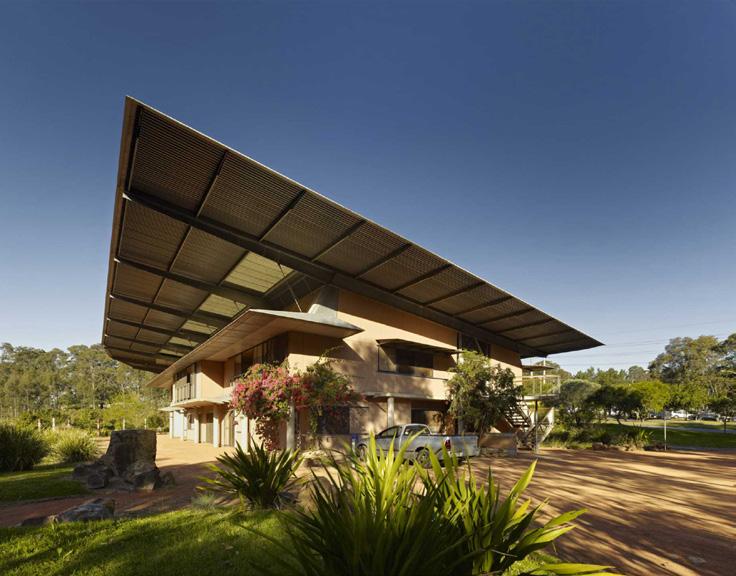
Strategy 5: Maintain and strengthen Footscray’s role as a premier health and education destination in Melbourne’s west and facilitate access to the New Footscray Hospital, Victoria University and surrounding medical and education facilities.
Priority actions:
Partner with Victoria University and Western Health to develop revised Footscray University Town strategy (2026 - 2031) - which embeds New Footscray Hospital and Western Health. 1 1
Feasibility study of relocating existing medical practices
Investigating the feasibility of and opportunities for relocating existing medical practices located near the current Footscray Hospital (Gordon Street) to be closer to the New Footscray Hospital (e.g. Droop Street, Tiernan Street, Ballarat Road and Nicholson Street).
Develop revised Footscray University Town strategy
1
Way-fnding infrastructure between medical and education facilities
Way-fnding infrastructure within the Health and Education precinct (e.g. along Tiernan Street, Nicholson Street and Droop Street) with lamp light banners and roadsigns.
These priority actions leverage Footscray’s vibrant neighbourhood and environment to strengthen connections between the existing medical and education facilities and emphasise Footscray’s identity as a health and education ‘hub’.
These actions contribute to achieving the ‘Destination: Heath and Education’ strategy and the Activation target by:
• Feasibility study of relocating existing medical practices: relocating existing medical practices, if feasible, may be benefcial for the Health and Education precinct. This could encourage the clustering of different medical services, contributing to accessibility and walkability and connecting New Footscray Hospital and the Footscray CBD.
• Revised Footscray University Town strategy: partnering with Victoria University and Western Health to revise the current Footscray University Town strategy (2020 - 2025) provides an opportunity to revisit priority actions and develop a new plan which also embeds the New Footscray Hospital and Western Health. This can encourage more collaborated actions between the Council, Victoria University and the New Footscray Hospital.
• Way-fnding infrastructure: wayfnding (e.g. banners in fgure 68) can encourage walkability and visibility for visitors to the destined medical and education facilities. This allows people to navigate the precinct on foot more easily and also contributes to the identity of the precinct by displaying local features and events.
FEASIBILITY STUDY - RELOCATION OF EXISTING MEDICAL PRACTICES


REVISED FOOTSCRAY UNIVERSITY TOWN STRATEGY WAY-FINDING INFRASTRUCTURE

1 3

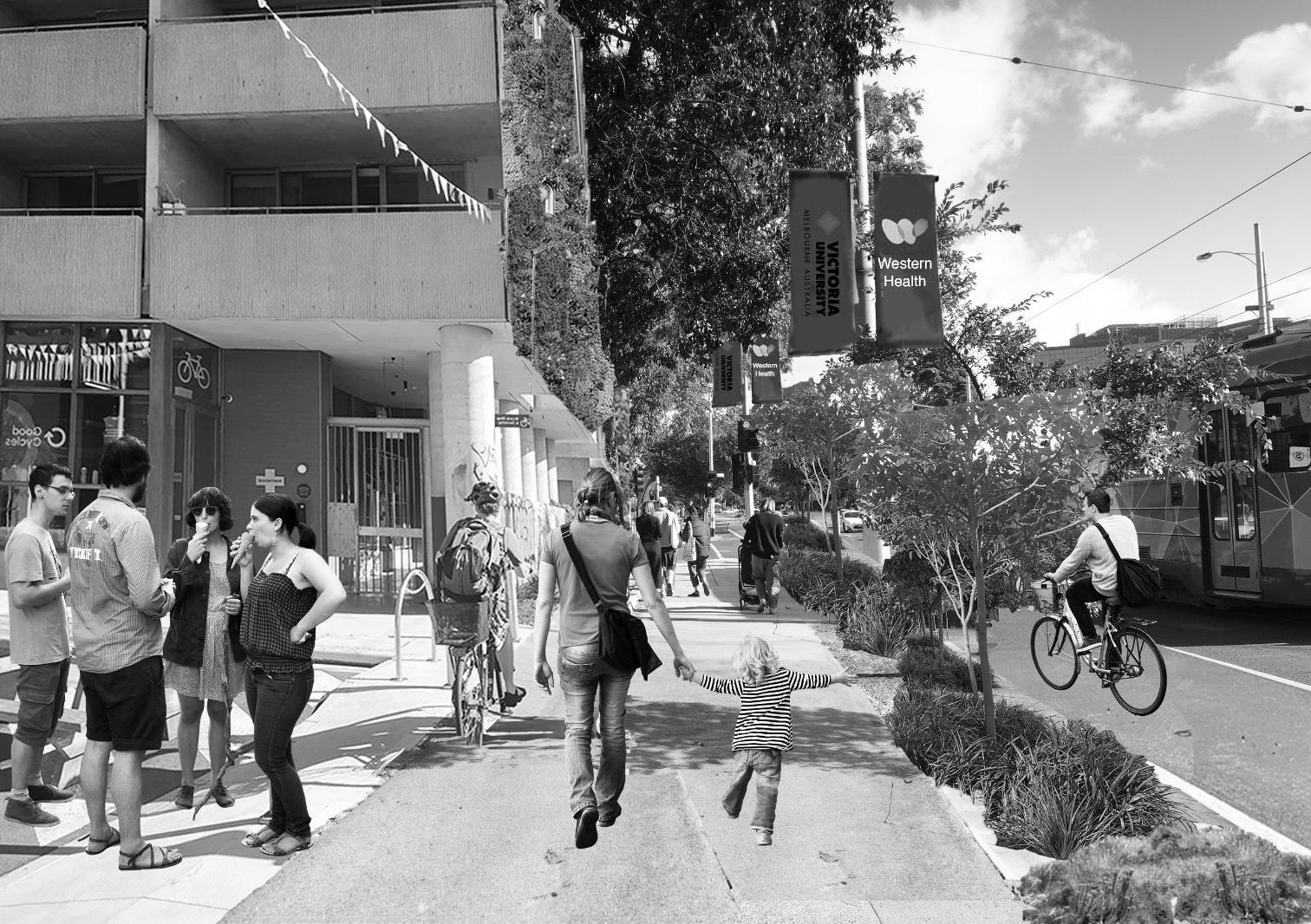
The strategies for the Health and Education precinct will take time to be realised, with the actions to be delivered in stages.
The key phases for implementation are:
• Short term (0 - 3 years): in the short term, early stage investigation and planning will be crucial to set the future development of the Health and Education precinct up for success.
• Medium term (4 - 8 years): within this medium term phase, the focus will be on implementation and development as the key moves to deliver infrastructure and services for the Health and Education precinct.
• Long term (8+ years): a small number of actions are staged to be delivered in the long term. This is to ensure the right infrastructure, in addition to community acceptance, have been achieved so that these actions can also be delivered successfully.
• Advocate for tram super-stop (Droop / Tiernan Street intersection).
• Implement cycling network upgrades - painted (on-road) along Droop Street.
• Implement pedestrian crossings at Nicholson Street / Donald Street and on Droop Street (near Kinnear Street development).
• Prepare framework plan for green corridor network.
• Prepare draft planning scheme amendment to mandate minimum green infrastructure requirements (for new developments).
• Advocate for grant program for sustainability improvements (for existing developments).
• Implement upgrades to footpath along Nicholson Street and Droop Street (footpath levelling and widening).
• Implement painted on-road cycle path along Geelong Road and Ballarat Road.
• Implement protected, separated cycle path along Droop Street, Geelong Road and Ballarat Road.
• Implement green corridor along Droop Street Green Spine.
• Develop demonstration green roof project at Donald Street car park development.
• Implement planning scheme amendment - mandatory green infrastructure requirements. *Subject to approval.
• Continue to implement green corridor network within the Health and Education precinct.
*Proposed staging and timeframes are indicative only and subject to modifcation, include available funding and changes to strategic delivery priorities.
HOUSING KEY WORKERS AND STUDENTS
RESPECTING AND REINVIGORATING CULTURE
DESTINATION HEALTH AND EDUCATION 2024
SHORT TERM (0 - 3 YEARS)
• Investigate opportunities for signifcant redevelopment along Droop Street.
• Amend Development Contributions Plan (affordable housing).
• Investigate rezoning strategic areas for higher-density housing and harmonised built form.
• Partner with Victoria University to reinvigorate ‘University Town’ events strategy.
• Develop Indigenous Design Guidelines in collaboration with Traditional Owners and RAPs.
• Investigate and prepare commercial opportunities framework plan.
• Investigate feasibility of relocating existing medical practices to and within the Health and Education precinct.
• Prepare and implement wayfnding strategy between existing medical and education facilities.
• Develop revised Footscray University Town strategy (2031).
MEDIUM TERM (4 - 8 YEARS)
• Develop Council owned Donald Street car park site (as a strategic development site) for key worker and student housing.
LONG TERM (8+ YEARS)
• Partner with Victoria University to identify work opportunities for Victoria University students in Footscray community (e.g Donald Street Car Park mixed use development).
• Evaluate and prepare revised Footscray University Town strategy (2036).
*Proposed staging and timeframes are indicative only and subject to modifcation, include available funding and changes to strategic delivery priorities.
The actions to create a more liveable Footscray, within the Health and Education precinct take a variety of forms and will be delivered by Maribyrnong City Council in collaboration with a number of key partners.
Advocate for tram super-stop (Droop / Tiernan Street intersection).
Advocate
Department of Transport and Planning (DTP), Public Transport Victoria.
Cycling network upgrades. Advocate / Invest DTP, BikeWest.
Footpath and pedestrian improvements / upgrades.
Advocate / Invest DTP.
Green corridors network. Invest
Demonstration green infrastructure project. Advocate / Invest
Amend planning scheme - mandatory minimum green infrastructure requirements.
Grants for green infrastructure / sustainability improvements.
Private developers, landscape architects, ecologists, civil engineers, Traditional Owners and Registered Aboriginal Parties (RAP).
Private developers, landscape architects, ecologists, civil engineers.
Advocate / Regulate DTP, Victorian Planning Authority (VPA), landscape architects, ecologists.
Advocate / Invest
State Government, DTP, VPA, landscape architects, ecologists.
Amend LGA wide Development Contributions Plan.
Advocate / Regulate DTP, VPA, development industry.
Investigate rezoning strategic areas to SUZ and RGZ. Regulate DTP, VPA.
Investigate signifcant redevelopment along Droop Street (near New Footscray Hospital).
Advocate / Invest / Regulate State Government, DTP, VPA, private developers.
Deliver key worker and student housing (Council-owned Donald Street car park site). Invest
State Goverment (Department of Housing), community housing providers, private developers.
Reinvigorate ‘University Town’ events strategy.
Indigenous Design Guidelines. Advocate / Invest Traditional Owners (Wurundjeri and Bunurong Peoples), RAP, landscape architects, architects, Offce of Victorian Government Architect.
Commercial opportunities framework plan. Advocate / Invest VU, local traders, private developers.
Work opportunities for Victoria University students. Advocate VU, local traders.
Feasibility study for relocation of existing medical practices.
/ Invest

A key feature of the implementation strategy is the Health and Education Precinct catalyst project - the Droop Street Framework Plan.
This plan will set out the pathway to deliver a number of the key actions to activate and achieve the WELL / BEINGS vision.
The key moves set out within the framework plan emphasise that while the New Footscray Hospital and Victoria University are pillars of the Health and Education precinct, health and education for overall wellbeing goes beyond these institutions. The broader built and natural environment and community have a signifcant role to play in creating a more liveable Footscray.

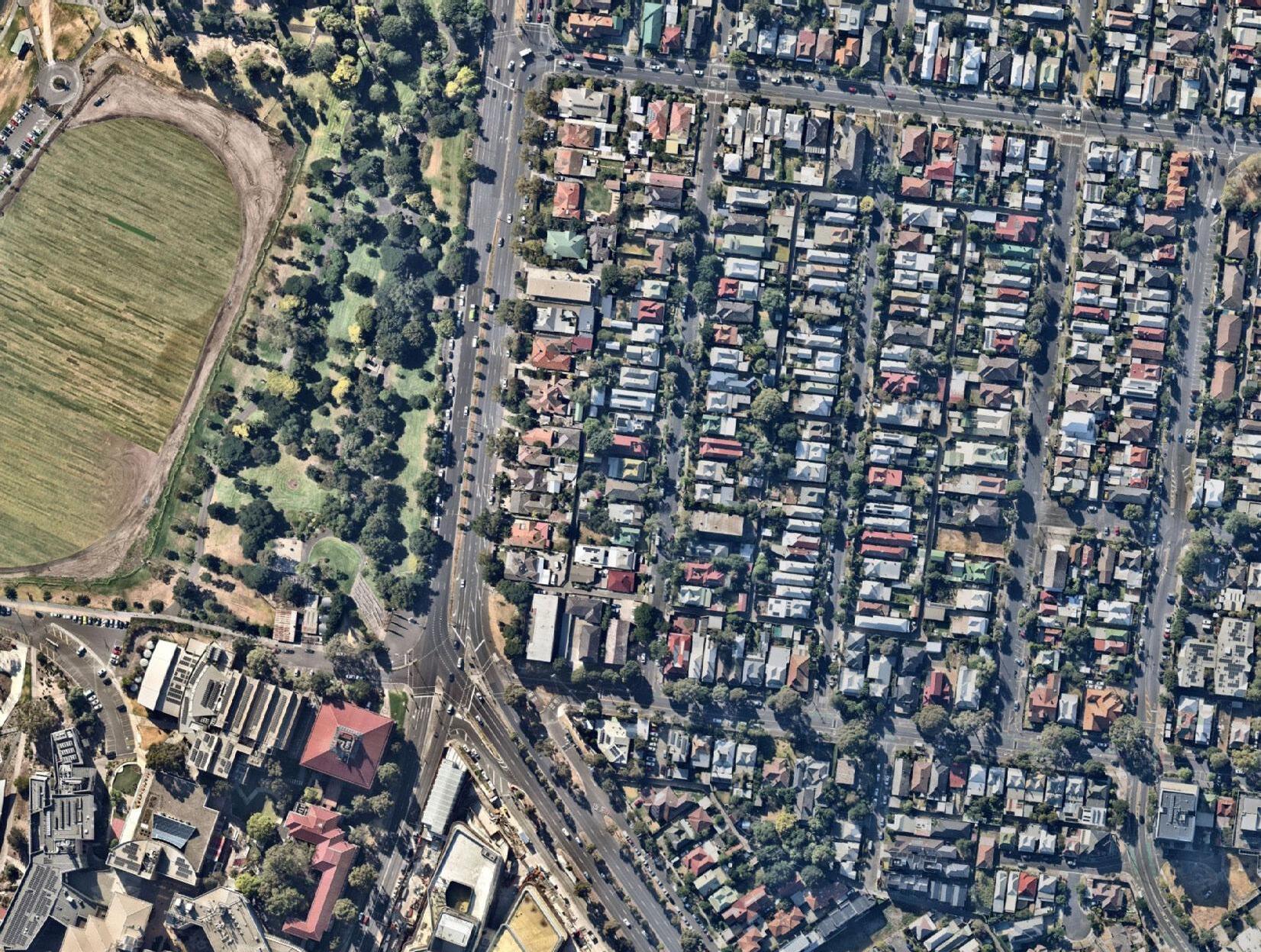



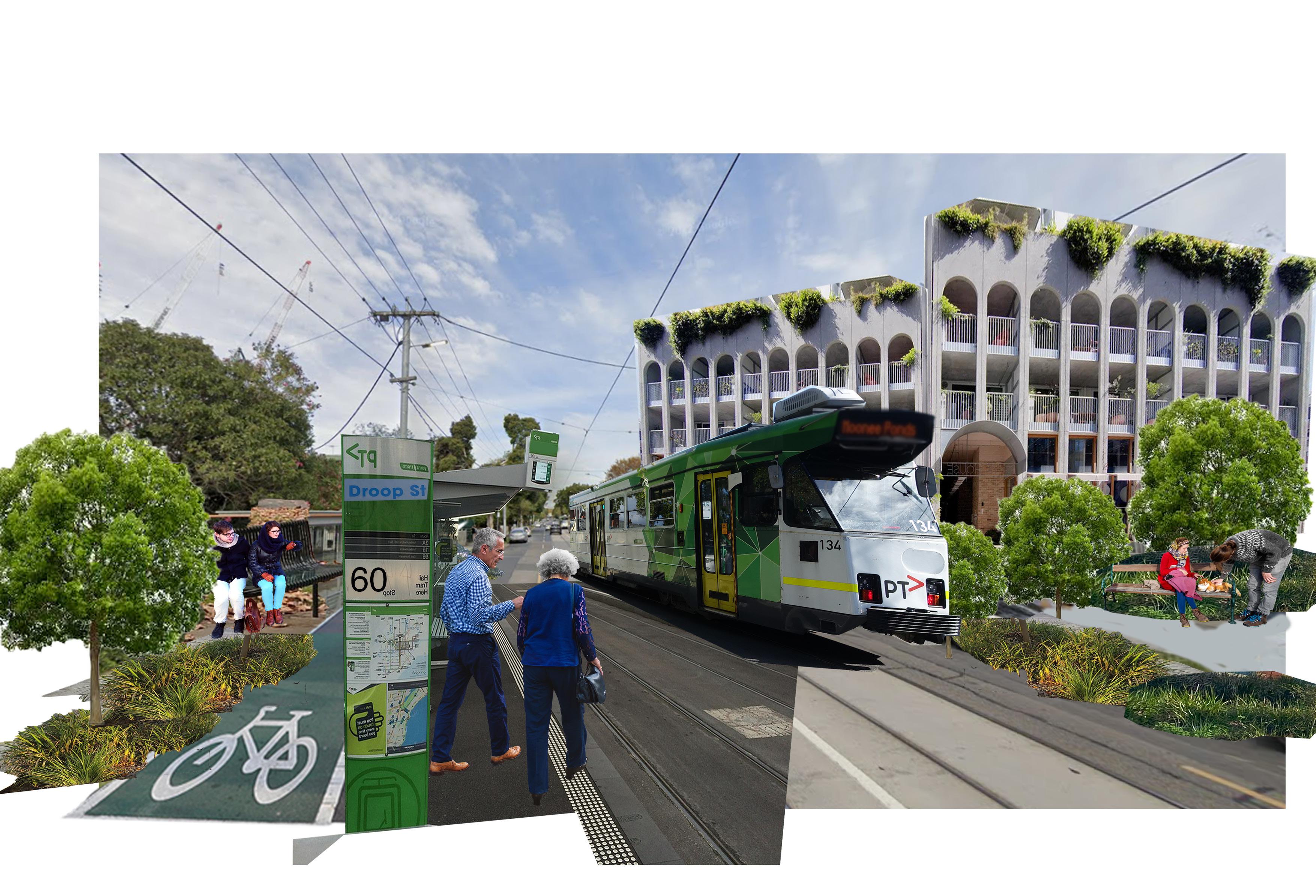
Droop Street - as a key connecting route between the New Footscray Hospital, Victoria University and the Footscray CBD - is a strategic site to implement a number of key transport, landscape and public realm improvements for the Health and Education precinct.
The Droop Street framework plan will provide a pathway to deliver the following transport, landscape and public realm outcomes:
cycle network upgrades along Droop Street - painted, on-road in the short-term (interim) and a separated, protected cycle path in the long term
Route 82 tram super stop at Tiernan Street intersectionimproving accessibility to the New Footscray Hospital and Victoria University Footscray Park campus
pedestrian upgrades along Droop Street and for Tiernan Street link to the New Footscray Hospital, Victoria University Footscray Park campus and Footscray Park
Droop Street Green Spine (biodiversity corridor)

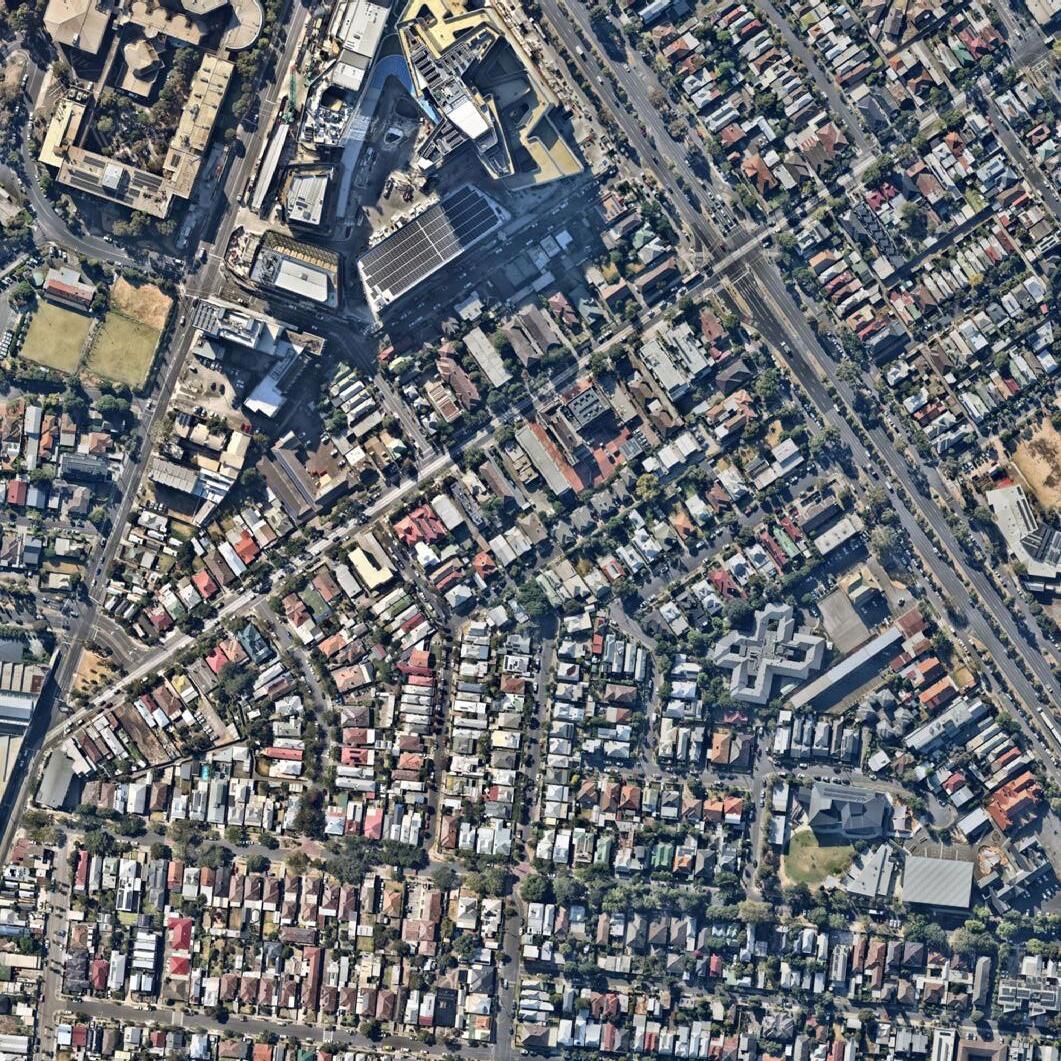
demonstration green infrastructure project (to be developed in conjunction with the mixed use development at the Council-owned Donald Street car park site)
public realm upgrades along Droop Street (e.g. seating).





Due to its location, existing built form and land uses, Droop Street is also a strategic site within the Health and Education Precinct for housing intensifcation and commercial and cultural activation.
The Droop Street framework plan will provide a pathway to deliver the following housing, culture and activation outcomes:
housing for key worker / student housing (to be delivered via the mixed-use development at the Council owned Donald Street Car Park site)
investigation for strategic rezoning for housing intensifcation near New Footscray Hospital and Victoria University Footscray Park campus
investigation of signifcant redevelopment along Droop Street, adjacent to the New Footscray Hospital (including private motel at 90 Droop Street) for housing and ancillary services




increase in commercial activities through mixed use developmentincluding to provide opportunities for Victoria University students to work within the Footscray community
way-fnding infrastructure between existing health and education facilities, along Droop Street and throughout the Health and Education precinct.


1.
2. 5 commercial tenancies (for students, residents and public).
3. ~750 m2 ground level open space and public realm.
4. Demonstration green infrastructure project.
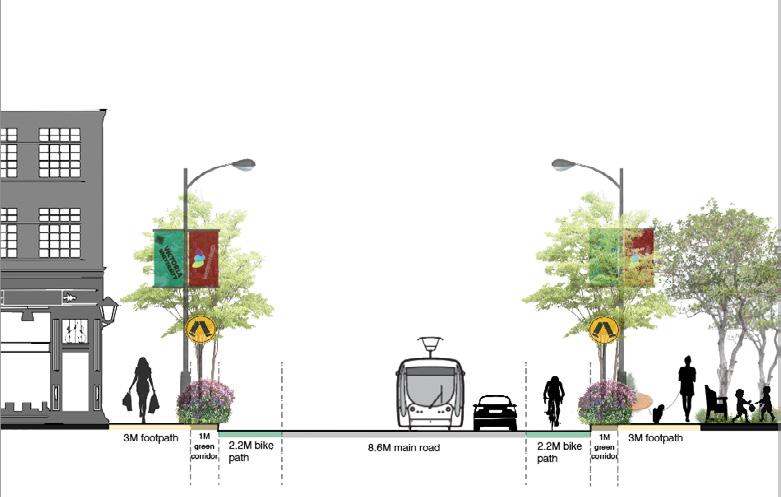

New Footscray Hospital and Victoria University anchor Footscray’s identity as a health and education precinct.
The liveability of Footscray more broadly can be enhanced through comprehensive planning for sustainable connections, affordable housing, accessible green spaces, and cultural revitalisation - aa set out in this strategic report focussing on its Health and Education precinct. The key strategies and actions document herein can assist to accommodate population growth through appropriate and affordable housing, as well as contributing to resident wellbeing and a true sense of belonging to place by addressing a number of elements of the built and natural environments which contribute to liveability.
This planning approach, which adopts a place-based approach, will readily translate for other health and education precincts within Melbourne which are also currently experiencing growth. This includes established precincts, such as Parkville and Arden and future precincts, such as Melton, with its new hospital underway.
6.3
“A bridge to health and learning at the New Footscray Hospital.” Western Health. Published March 28, 2024. https://www.westernhealth.org.au/AboutUs/News/Pages/A-bridge-to-health-and-learning-at-the-NewFootscray-Hospital.aspx, fgure 14.
“Dugurrdja Precinct.” James Cook University. Published August 9, 2023. https://www.jcu.edu.au/dugurrdja-precinct, fgure 129.
“Flemington.” Racing and Sports (blog), accessed May 16, 2024. https://www.racingandsports.com.au/thoroughbred/course/australia/femington, fgure 22.
“Mori Garden Roppongi Cherry Blossoms.” Japan Web Magazine, February 9, 2022. https://jw-webmagazine.com/best-sakura-spots-in-tokyo-vol6-mori-garden-roppongi-hills-3b9be6496b8b/, fgure 131.
“Think Tram.” Wikipedia. Accessed March 24, 2024. https://en.wikipedia.org/wiki/Think_Tram#, fgure 105.
“United Nations Sustainable Development Goals.” United Nations. Updated September, 2023. https://www.un.org/sustainabledevelopment, fgure 127.
*The content of this publication has not been approved by the United Nations and does not refect the views of the United Nations or its offcials or Member States.”
“Victoria University Logo PNG Vector.” Seeklogo, accessed May 18, 2024. https://seeklogo.com/vector-logo/310323/victoria-university.
ABC News. “Footscray’s proposed new $1.5b hospital a ‘gamechanger’ for Melbourne’s west.” ABC News. October 7, 2018. https://www.abc.net.au/news/2018-10-07/new-1.5b-hospital-for-footscray-under-reelectedlabor-government/10348068., fgure 19.
ABS. “2021 Greater Melbourne, Census All Persons QuickStats | Australian Bureau of Statistics.” Australian Bureau of Statistics, 2021. https://www.abs.gov.au/census/fnd-census-data/quickstats/2021/2GMEL.
ABS. “2021 Footscray, Census Community Profles | Australian Bureau of Statistics.” Australian Bureau of Statistics, 2021. https://www.abs.gov.au/census/fnd-census-data/community-profles/2021/SAL20935.
ABS. “2021 Greater Melbourne, Census Community Profles | Australian Bureau of Statistics.” Australian Bureau of Statistics, 2021. https://www.abs.gov.au/census/fnd-census-data/community-profles/2021/2GMEL.
ACT Government. “Proposed Dickson Shops upgrade revealed”. ACT Government. Accessed May 17, 2024. https://www.act.gov.au/our-canberra/latest-news/2024/march/proposed-dickson-shops-upgrade-revealed, fgure 51.
Alimed, Inc. “Is a Lightweight Wheelchair Right for You?” June 22, 2023. https://www.alimed.com/is-a-lightweight-wheelchair-right-for-you-blog/.
Australian Bureau of Statistics. “2021 Footscray, Census All Persons QuickStats | Australian Bureau of Statistics.” Australian Bureau of Statistics, 2021. https://www.abs.gov.au/census/fnd-census-data/quickstats/2021/ SAL20935.
Backhouse, Megan. “Rooftop gardens might save our wildlife. So why aren’t we making more.” The Age (Melbourne). February 19, 2021. https://www.theage.com.au/lifestyle/health-and-wellness/rooftop-gardens-mightsave-our-wildlife-so-why-aren-t-we-making-more-20210212-p571vk.html, fgure 97.
Ball, Timmah. “Remember Me: Architecture, Placemaking and Aboriginal Identity.” Assemble Papers. May 28, 2015. https://assemblepapers.com.au/2015/05/28/remember-me-architecture-placemaking-and-aboriginal-identity-2/, fgure 29.
Bay Media Australia, Princess Alexandra Hospital in Brisbane, accessed May 18, 2024. https://baymedia.com.au/what-we-do/print/light-pole-banners/, fgure 68.
Bennetts, Peter, “Additions”, City of Melbourne, accessed April 5, 2024. https://www.melbourne.vic.gov.au/building-and-development/heritage-planning/heritage-design-guide/Pages/additions.aspx., fgure 113.
Barak, William. “Ceremony.” Deadly Story. Accessed March 23, 2024. https://deadlystory.com/page/aboriginal-country-map/Aboriginal_Country_Completed/Wurundjeri/Wurundjeri_People, fgure 120.
C40 Climate Leadership Group, Inc. “Nature Conservation Ordinance is Greening Toyko’s Buildings.” C40 Cities. March, 2015. https://www.c40.org/case-studies/nature-conservation-ordinance-is-greening-tokyo-s-buildings/#:~:text=According%20to%20the%20Nature%20Conservation,m2%20for%20public%20facilities.
Candappa, Nimmi. Logan, David. Nes, Nicole Van. Corben, Bruce. “An exploration of alternative intersection designs in the context of Safe System”. Accident Analysis and Prevention. August 28, 2014. https://www. researchgate.net/publication/261216598_innovative_intersection_designs_better_aligning_with_safe_system, fgure 31.
City of Melbourne. “Green Factor tool.” City of Melbourne. Accessed May 16, 2024. https://participate.melbourne.vic.gov.au/amendment-c376/green-factor-tool, fgure 55.
City of Melbourne. “Meyers Place Green Wall (Loop Bar)”. City of Melbourne. Accessed May 28, 2024. https://www.melbourne.vic.gov.au/community/greening-the-city/urban-forest-fund/funded-projects/pages/meyers-place.aspx, fgure 56.
City of Melbourne. “New riding lanes”. City of Melbourne. Accessed May 17, 2024. https://www.melbourne.vic.gov.au/building-and-development/shaping-the-city/city-projects/Pages/new-bike-lanes.aspx, fgure 50.
City of Melbourne. “Urban Forest Fund.” City of Melbourne. Accessed May 16, 2024. https://www.melbourne.vic.gov.au/community/greening-the-city/urban-forest-fund/Pages/urban-forest-fund.aspx.
Clapham, David. “Happiness, Well-Being and Housing Policy.” Policy & Politics 38, no.2 (2010): 253–267. https://doi.org/10.1332/030557310x488457.
Council of the City of Sydney. Green Square Affordable Housing Program. Green Square: Council of the City of Sydney, 2023. https://www.cityofsydney.nsw.gov.au/affordable-housing-contributions/green-square-affordable-housing-program, fgure 57.
Cox Architecture. “The Bays West Master Plan.” Cox Architecture. Accessed April 5, 2024.https://www.coxarchitecture.com.au/perspective/the-bays-west-master-plan/, fgure 53.
David Lock Associates. Postcode 3081: Final Urban Design Framework. Postcode 3081: David Lock Associates, 2019. https://www.banyule.vic.gov.au/fles/assets/public/planning/reference-documents/postcode-3081-urban-design-framework-amendment-c120.pdf?_ga=2.94761436.1936040794.1716136570-2143136021.1716136570, fgure 58.
Department of Planning and Transport, State Government Victoria. Maribyrnong Planning Scheme. Accessed March 24, 2024. https://planning-schemes.app.planning.vic.gov.au/Maribyrnong/ordinance.
Department of Transport and Planning. “Plan Melbourne”. Department of Transport and Planning. Updated June 13, 2023. https://www.planning.vic.gov.au/guides-and-resources/strategies-and-initiatives/plan-melbourne/the-plan, fgure 11 and 23.
Department of Transport and Planning. “Victoria in Future 2023.” Department of Transport and Planning. Published September 2024. https://www.planning.vic.gov.au/guides-and-resources/data-and-insights/victoria-in-future.
Dewar, Peter. “William Cooper came to Footscray and demanded a King’s support for an Indigenous voice.” The Westsider (Melbourne), July 19, 2022. https://thewestsider.com.au/william-cooper-came-to-footscrayand-demanded-a-kings-support-for-an-indigenous-voice/.
Florian, Maria-Cristina. “A-lab and LPO Unveil Design for a Mixed-Use Development as Part of Fjord City Oslo, a Large-Scale Urban Renewal Project.” ArchDaily. January 5, 2023. https://www.archdaily.com/994647/alab-and-lpo-unveil-design-for-a-mixed-use-development-as-part-of-fjord-city-oslo-a-large-scale-urban-renewal-project, fgure 121.
Footscray Community Arts. “Events: The Dreaming Project.” Footscray Community Arts. Accessed March 16, 2024. https://footscrayarts.com/events/category/outdoor-events/list/?tribe-bar-date=2022-08-10, fgure 30.
Footscray Community Arts. “Faces of Footscray.” The Westsider (Melbourne), December 1, 2023. https://thewestsider.com.au/faces-of-footscray-dr-emina-hajdarevic/, fgure 37.
Footscray Community Arts. “Faces of Footscray with Dr. Emina Hajdarevic.” Accessed April 10, 2024. https://vimeo.com/809651476.
Fortune Well. “Ann Arbor | 25 Best Places to Live for Families,” Accessed March 25, 2024, https://fortune.com/well/ranking/best-places-families/2022/ann-arbor/, fgure 122.
Gordon, Zilla. “Nightingale Housing boss concerned NIMBYism in inner-Melbourne adding to rental concerns, as Merri-bek Council knocks back development.” ABC News (Melbourne), April 28, 2023. https://www.abc. net.au/news/2023-04-28/nightingale-social-housing-development-in-brunswick-scaled-back/102277020, fgure 7 and 60.
Hubbard, Phil, Kitchin, Rob, and Valentine, Gill. Key Texts in Human Geography: Place and placelessness (1976): Edward Relph. London: SAGE Publications, Limited, 2008.
International Association of Horticultural Producers (AIPH). “Melbourne, Australia: Grey to Green.” AIPH. Accessed May 16, 2024. https://aiph.org/green-city-case-studies/melbourne-australia/, fgure 73
Karssenberg, Hans, and Jeroen Laven. “The City at Eye Level - Second and Extended version (2016).” The City at Eye Level. May 23, 2016. https://thecityateyelevel.com/stories/the-city-at-eye-level/.
Kilbane, Simon. “A common green: The Eve Apartments.” Landscape Architecture Australia (Melbourne, Victoria), July 4, 2019. https://landscapeaustralia.com/articles/a-common-green-the-eve-apartments/, fgure 54.
Knobel, Pablo, Roser Maneja, Xavier Bartoll, Lucia Alonso, Mariska Bauwelinck, Antonia Valentin, Wilma Zijlema, Carme Borrell, Mark Nieuwenhuijsen, and Payam Dadvand. “Quality of Urban Green Spaces Infuences Residents’ Use of These Spaces, Physical Activity, and Overweight/Obesity.” Environmental Pollution 271 (February 2021): 116393. https://doi.org/10.1016/j.envpol.2020.116393.
Kraatz, Judy A. “Innovative Approaches to Building Housing System Resilience: A Focus on the Australian Social and Affordable Housing System.” Australian Planner 55, no.3-4 (2018): 174–85. https://doi.org/10.1080/0 7293682.2019.1632361.
Lawlor, Gail. Curries, Beth Anne, Doshi, Hitesh and Wieditz, Ireen. “Green Roofs: A Resource Manual for Municipal Policy Makers.” Canada Mortgage and Housing Corporation. Canada: 2006. https://publications.gc.ca/ collections/collection_2016/schl-cmhc/NH18-26-4-2006-eng.pdf.
Lowe, Melanie, Carolyn Whitzman, and Billie Giles-Corti. “Health-Promoting Spatial Planning: Approaches for Strengthening Urban Policy Integration.” Planning Theory & Practice 19, no.2(2017): 180–197. https://doi.or g/10.1080/14649357.2017.1407820.
Maribyrnong City Council. “Aboriginal Maribyrnong.” Maribyrnong City Council. Accessed March 16, 2024. https://www.maribyrnong.vic.gov.au/Discover-Maribyrnong/Our-history-and-heritage/Aboriginal-Maribyrnong.
Maribyrnong City Council. “The history of Footscray and surrounds.” Maribyrnong City Council. Accessed March 16, 2024. https://www.maribyrnong.vic.gov.au/Discover-Maribyrnong/Our-history-and-heritage/The-history-of-Footscray-and-surrounds#:~:text=The%20area%20around%20Footscray%20was,can%20hear%20a%20ringtail%20possum%27.
Maribyrnong City Council. Council Plan 2021/25: Incorporating Municipal Public Health and Wellbeing Plan. Melbourne, Victoria: 2021. https://www.maribyrnong.vic.gov.au/About/Our-plans-and-performance/Council-Plan.
Maribyrnong City Council. Development Contributions Plan - Fact Sheet. Melbourne, Victoria: 2023. https://www.maribyrnong.vic.gov.au/Building-and-Planning/Development-Contributions-Planning-DCP
Maribyrnong City Council. Maribyrnong City Council Reconciliation Action Plan: May 2020 to May 2022. Melbourne, Victoria: 2020. https://www.maribyrnong.vic.gov.au/About/Our-plans-and-performance/Reconciliation-Action-Plan.
Maribyrnong City Council. “Planning Scheme Amendment C125 - Footscray Structure Plan”. Maribyrnong City Council. Published March 19, 2015. https://www.maribyrnong.vic.gov.au/Building-and-Planning/Planning-Services/Current-and-future-planning/Planning-Scheme-Amendments/Recently-determined-planning-scheme-amendments/Planning-Scheme-Amendment-C125, fgure 24.
Maribyrnong City Council. “Sustainable Design Assessment in the Planning Process”. Maribyrnong City Council. Accessed April 3, 2024. https://www.maribyrnong.vic.gov.au/Building-and-Planning/Planning-Services/ Planning-permits/Sustainable-Design-Assessment-in-the-Planning-Process.
Martin, Adam, Yevgeniy Goryakin, and Marc Suhrcke. “Does Active Commuting Improve Psychological Wellbeing? Longitudinal Evidence from Eighteen Waves of the British Household Panel Survey.” Preventive Medicine 69, (2014): 296–303. https://doi.org/10.1016/j.ypmed.2014.08.023.
Melbourne Way (@melbourneway@aus.social). “The magic of safe social bike riding. Made Made possible by #ProtectedBikeLanes and low traffc shared streets.” Mastodon. November 6, 2022. https://aus.social/@ melbourneway/109294834210339363, fgure 72.
Minter, Elizabeth. “CHAMPIONS OF THE WEST – Liliana Bravo, Casa Bonita Lifestyle.” The Westsider (Melbourne), March 1 2024. https://thewestsider.com.au/champions-of-the-west-liliana-bravo-casa-bonita-lifestyle/, fgure 36.
Monash University and the University of Queensland. “Footscray and Footscray City.” Victorian Places. Accessed March 16, 2024. https://www.victorianplaces.com.au/footscray-and-footscray-city.
Nash, Sean, and Raktim Mitra. “University Students’ Transportation Patterns, and the Role of Neighbourhood Types and Attitudes.” Journal of Transport Geography, no.76 (April 2019): 200–211. https://doi.org/10.1016/j. jtrangeo.2019.03.013.
Nightingale. “Nightingale Fremantle.” Nightingale Housing. Accessed April 11, 2024. https://www.nightingalehousing.org/project/nightingale-fremantle, fgure 51, 72 and 73.
Nightingale Housing. “Nightingale ParkLife – Part of The Village.” Nightingale. Accessed May 16, 2024. https://www.nightingalehousing.org/project/nightingale-parklife, fgures 71 and 126.
OliverRamsay. “Hospital Western Health Health Care Medicine PNG.” IMGBIN. January 28, 2017. https://imgbin.com/png/u1dyjD3m/hospital-western-health-health-care-medicine-png.
Outlines Landscape Architecture. “Malop Street Green Spine.” Outlines. Accessed May 16, 2024. https://www.outlinesla.com.au/project/malop-street-green-spine, fgure 53.
Ore, Adeshola. “Flemington racecourse food wall ‘served its purpose’, Victoria Racing Club boss tells inquiry.” The Guardian (Australia), October 11, 2023. https://www.theguardian.com/australia-news/2023/oct/11/femington-racecourse-food-wall-served-its-purpose-victoria-racing-club-boss-tells-inquiry, fgure 33.
RBA Architects. “Heritage Award for Footscray Railway Station.” RBA Architects. Accessed April 4, 2024. https://www.rbaarchitects.com.au/heritage-award-for-footscray-railway-station/., fgure 20.
Russell, James S.. “The Future of Affordable Housing.” Architectural Record (blog), September 1, 2021. https://www.architecturalrecord.com/articles/15279-the-future-of-affordable-housing, fgure 59.
Sambul, Najma. “Inside the New $1.5 Billion Footscray Hospital.” The Age, March 26, 2024. https://www.theage.com.au/national/victoria/inside-the-new-1-5-billion-footscray-hospital-20240314-p5fcbw.html
Seattle Government. “South Thornton Natural Drainage System (NDS) Project.” Seattle Public Utilities. Accessed April 4, 2024. https://www.seattle.gov/utilities/neighborhood-projects/south-thornton-natural-drainage-system, fgure 98.
Sims, Matthew. “Protecting a key part of Aboriginal history in Footscray.” Star Weekly (Melbourne), March 22, 2023. https://maribyrnonghobsonsbay.starweekly.com.au/news/protecting-a-key-part-of-aboriginal-historyin-footscray/.
Smith, Melody, Jamie Hosking, Alistair Woodward, Karen Witten, Alexandra MacMillan, Adrian Field, Peter Baas, and Hamish Mackie. “Systematic Literature Review of Built Environment Effects on Physical Activity and Active Transport - an Update and New Findings on Health Equity.” The International Journal of Behavioral Nutrition and Physical Activity 14, no.1 (2017): 158. https://doi.org/10.1186/s12966-017-0613-9
State Government of Victoria. “Footscray Opportunity & Directions Paper”. Victoria State Government. Updated November 15, 2023. https://www.vic.gov.au/footscray-precinct, fgure 25.
State Government of Victoria. Level Crossing Removal Project Indigenous Design Guidelines. October 2021. https://bigbuild.vic.gov.au/__data/assets/pdf_fle/0005/643415/LXRP-Indigenous-Design-Guidelines-Oct21. pdf, fgure 63.
State Government of Victoria (Victorian Health Building Authority). “New Footscray Hospital pedestrian footbridge connects health and education.” Victorian Health Building Authority. March 19, 2024. https://www.vhba. vic.gov.au/health/hospitals/new-footscray-hospital, fgure 12, 13, and 75.
Sue Harper Architects. “Biribahn, Newcastle.” Sue Harper Architects. Accessed May 27, 2024. https://sueharperarchitects.com.au/project/biribahn-newcastle/, fgures 64 and 123.
Teodor Javanaud Emdén, “Skalgubbar by Teodor Javanaud Emdén,” Skalgubbar, 2024, https://skalgubbar.se/.
The Academy of Urbanism. “The Freiburg Charter for Sustainable Urbanism”. The Academy of Urbanism. Published September 13, 2013. https://issuu.com/theaou/docs/aou_freiburg_charter_fnal_print, fgure 132 and 133.
The City of New York. “Sidewalks”. New York City Street Design Manual. Accessed March 25, 2024. https://www.nycstreetdesign.info/material/sidewalks, fgure 107
The Heart Gardening Project Inc. 2022. “Melbourne Pollinator Corridor.” The Heart Gardening Project. Accessed March 24, 2024. https://theheartgardeningproject.org.au/melbourne-pollinator-corridor, fgure 96.
To Melbourne. “History of Footscray.” ToMelbourne.com.au. Published September 7, 2019. https://tomelbourne.com.au/category/suburbs/city-of-maribyrnong/footscray/)
Tokyo Metropolitan Government. “Creating a Sustainable City. Tokyo’s Environmental Policy.” Tokyo, Japan: 2021. https://www.metro.tokyo.lg.jp/english/about/environmental_policy/documents/creating_a_sustainable_ city_e_1029.pdf, fgure 130.
Torrens University Australia Limited. “Torrens University’s student-run café is serving up coffee with a conscience.” Accessed May 18, 2024. https://www.torrens.edu.au/stories/newsroom/b-corp/student-run-cafe-is-serving-up-coffee-with-a-conscious, fgure 61.
The State of Queensland 2024 (Queensland Health). Cairns and Hinterland Hospital and Health Service Strategic Plan 2023-2027. Accessed April 2, 2024, fgure 128.
Victoria University. “Events for Future Students.” Victoria University. Accessed May 16, 2024. https://www.vu.edu.au/study-at-vu/information-for/events-for-future-students, fgure 74.
Victoria University. “Inaugural One Night in Footscray Had People Dancing in the Street.” Accessed May 18, 2024. https://www.vu.edu.au/about-vu/news-events/news/inaugural-one-night-in-footscray-had-people-dancing-in-the-street, fgure 62.
Victoria University. “Our Service.” Victoria University. Accessed April 4, 2024, https://www.vu.edu.au/campuses/footscray-nicholson, fgure 21.
Victoria University and Maribyrnong City Council. Footscray University Town Vision and Strategic Priorities 2020-2025. Accessed May 19, 2024. https://content.vu.edu.au/sites/default/fles/fut-priorities-2025.pdf, fgure 67.
Victorian Health Building Authority. “New Footscray Hospital Project - Project Summary.” May 2021: P. 31, fgure x.
Wolch, Jennifer R., Jason Byrne, and Joshua P. Newell. “Urban Green Space, Public Health, and Environmental Justice: The Challenge of Making Cities ‘Just Green Enough.’” Landscape and Urban Planning 125, no.125 (2024): 234–44. https://doi.org/10.1016/j.landurbplan.2014.01.017.
Wurundjeri Woi-wurrung Cultural Heritage Aboriginal Corporation. “Our Story.” Wurundjeri Woi-wurrung Cultural Heritage Aboriginal Corporation. Accessed March 16, 2024. https://www.wurundjeri.com.au/our-story/ recent-history-present/.
